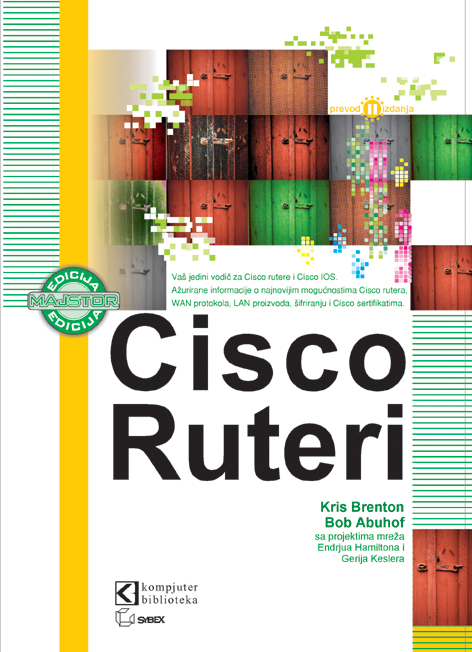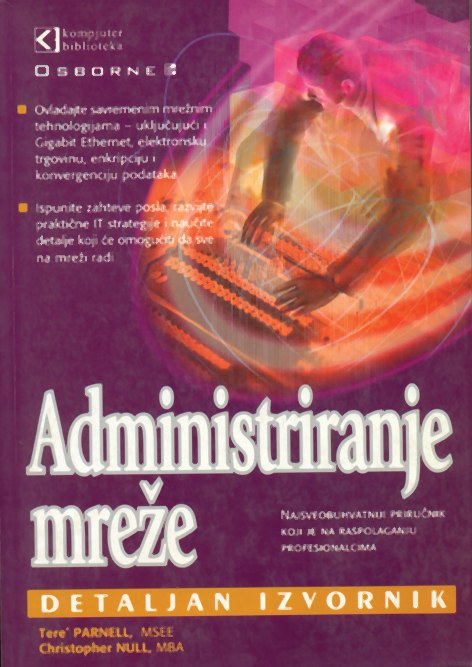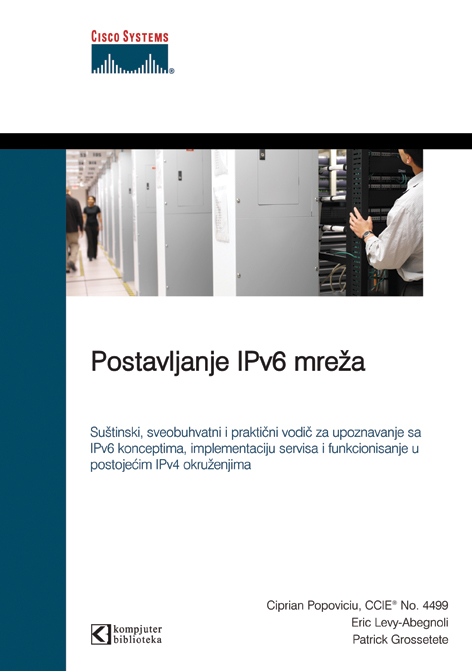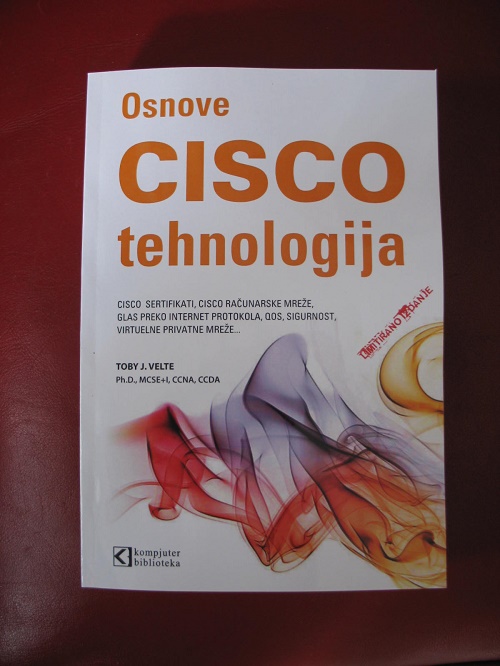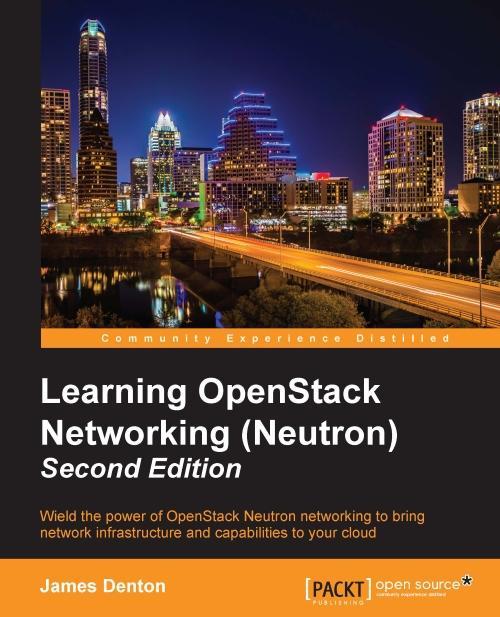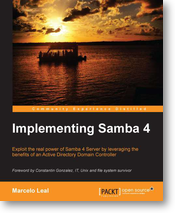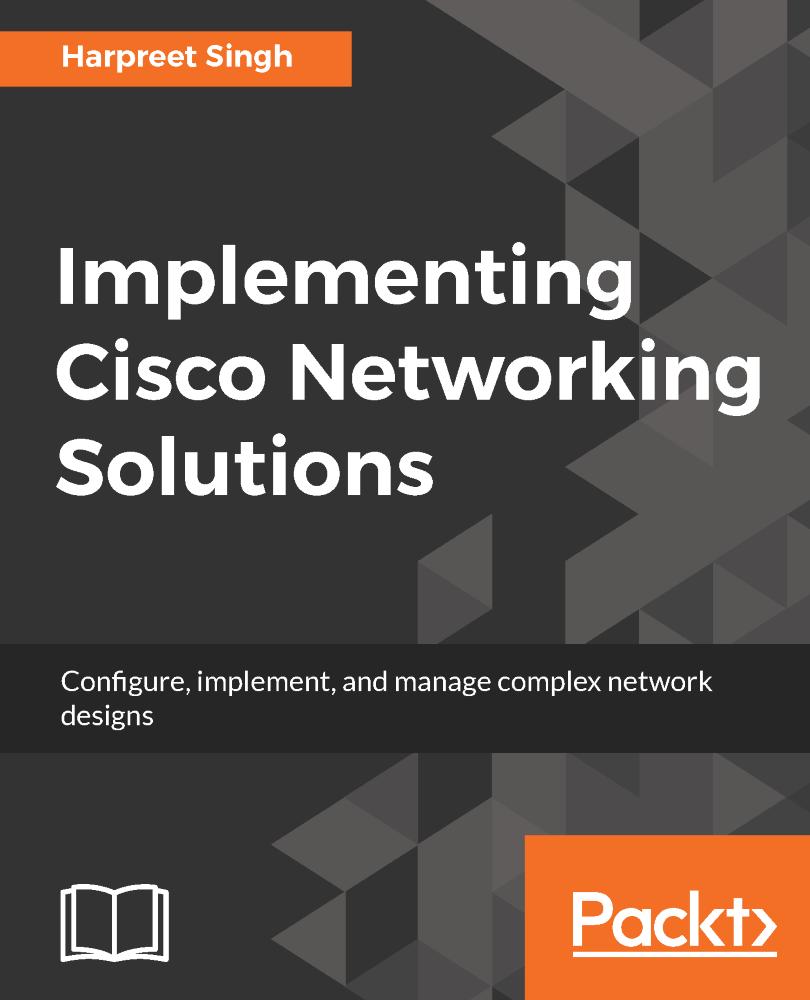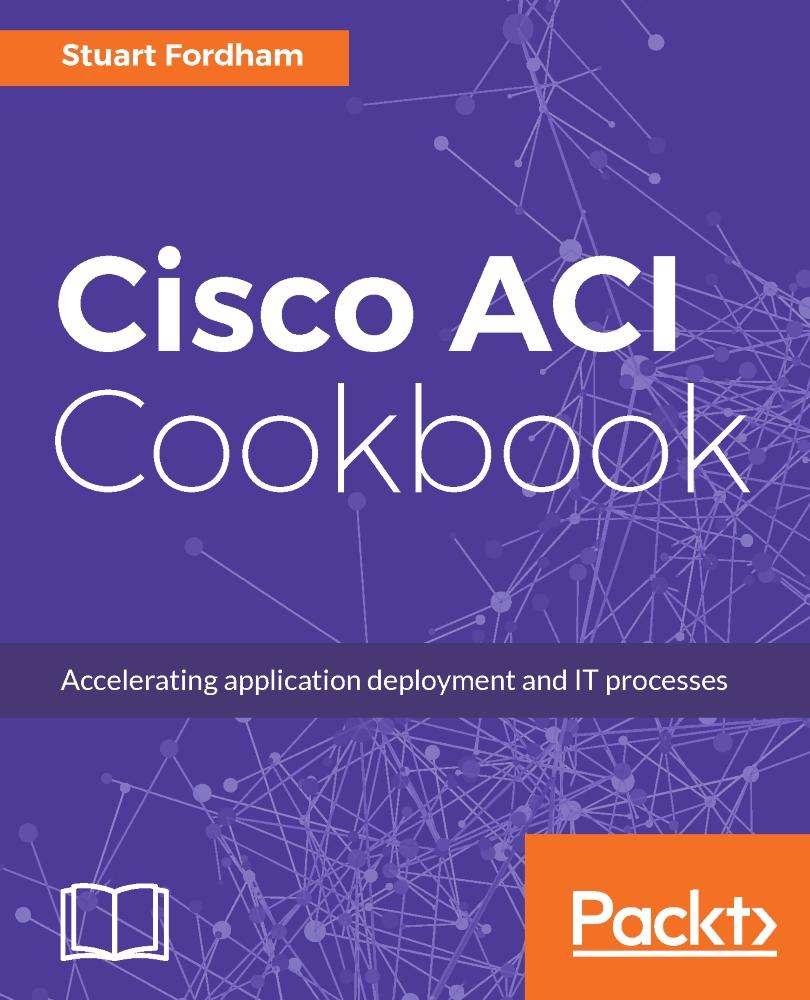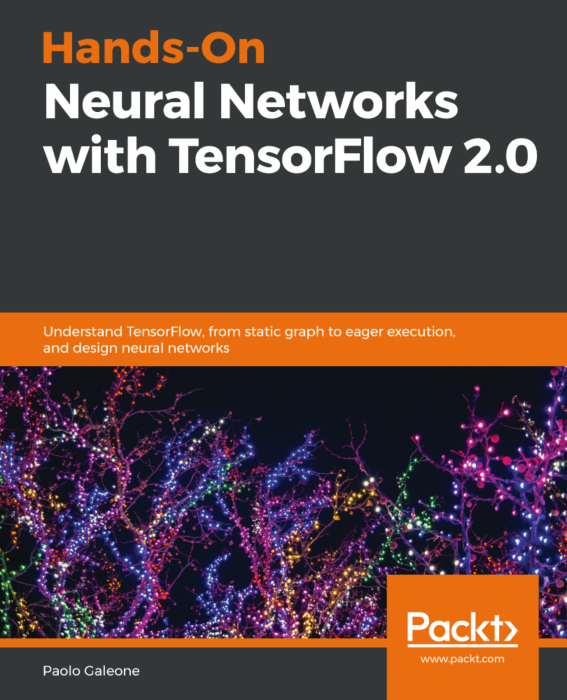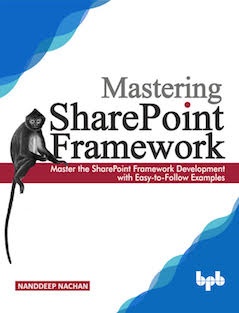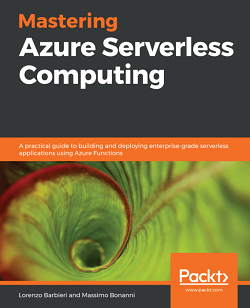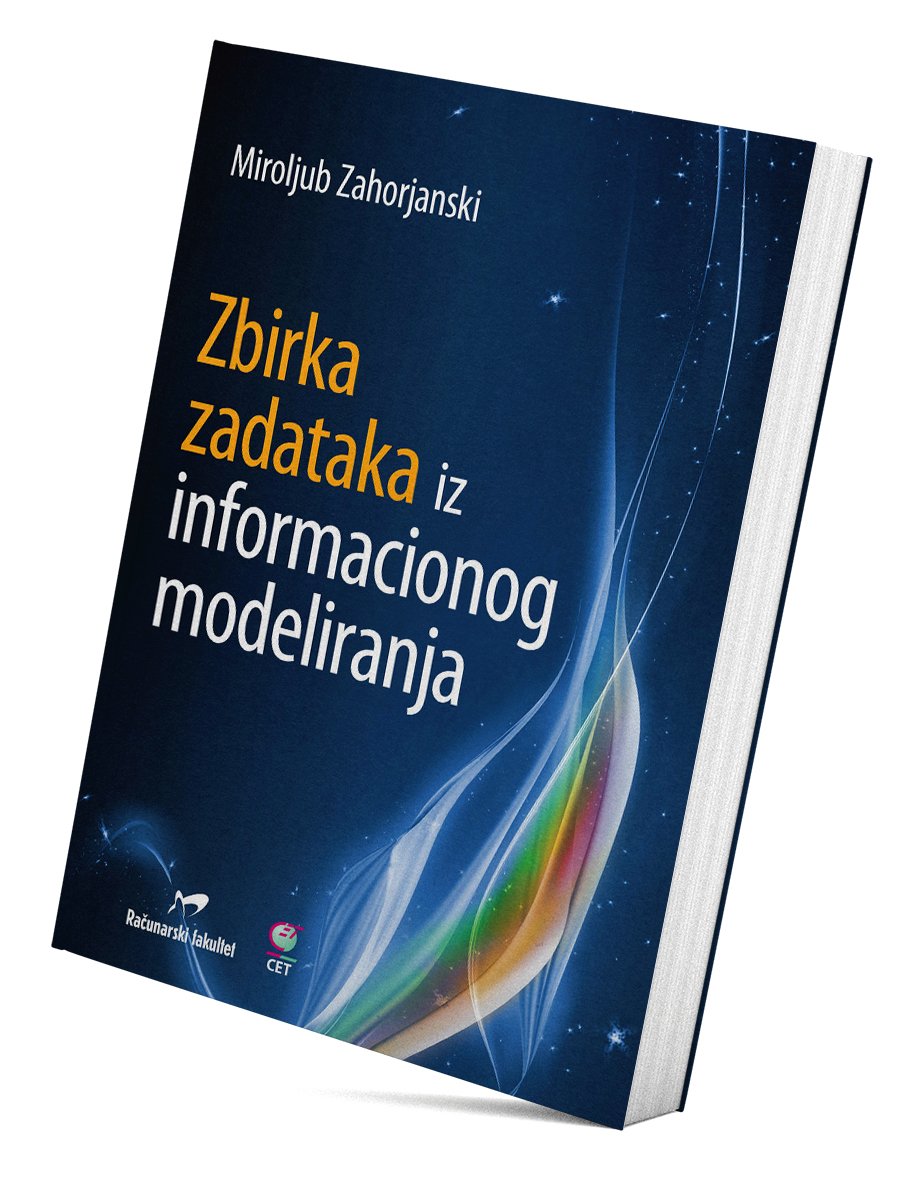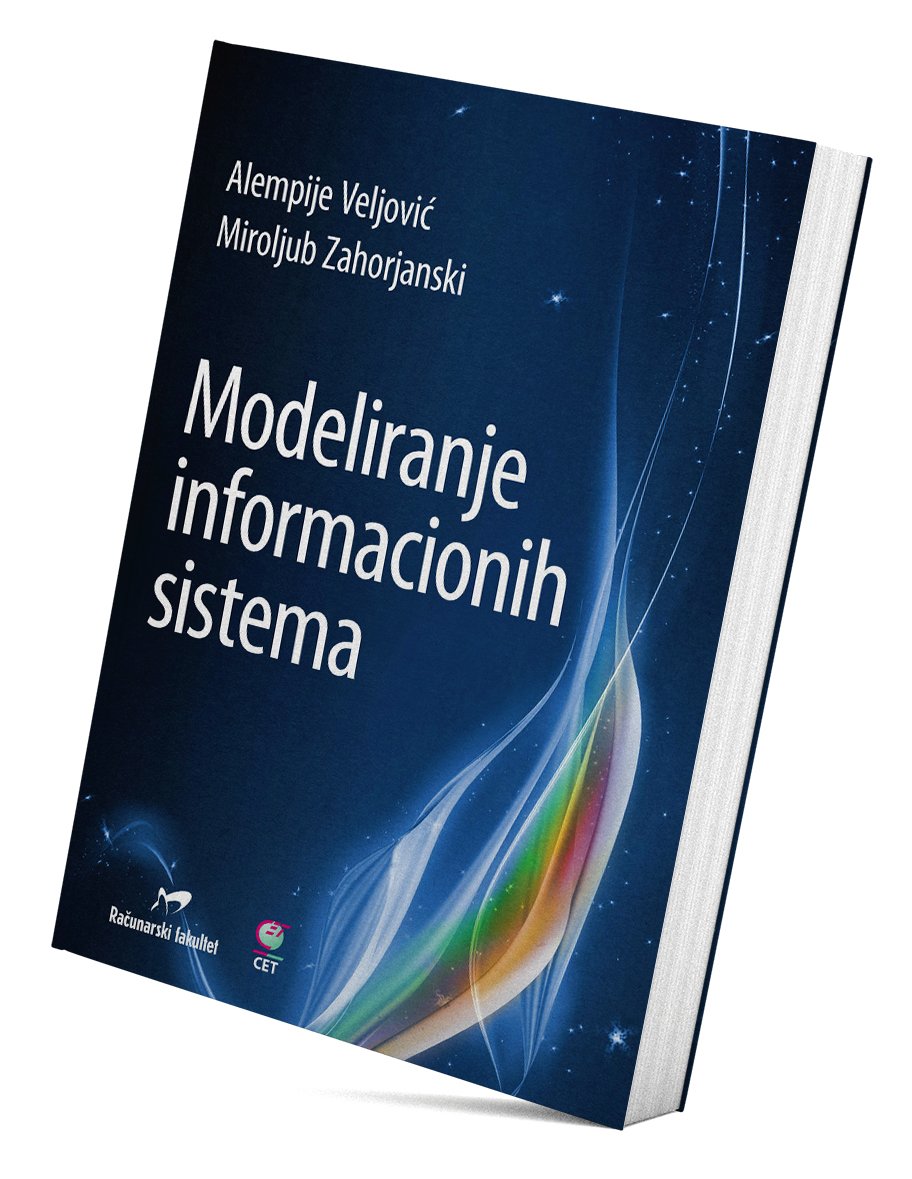Pratite promene cene putem maila
- Da bi dobijali obaveštenja o promeni cene potrebno je da kliknete Prati oglas dugme koje se nalazi na dnu svakog oglasa i unesete Vašu mail adresu.
1-23 od 23 rezultata
Broj oglasa
Prikaz
1-23 od 23
1-23 od 23 rezultata
Prikaz
Režim promene aktivan!
Upravo ste u režimu promene sačuvane pretrage za frazu .
Možete da promenite frazu ili filtere i sačuvate trenutno stanje
Aktivni filteri
-
Tag
Mreže
Iz sadržaja: Razumevanje topologija, tipova veza, pakovanja podataka i OSI modela Izbor odgovarajućih LAN i WAN tehnologija Projektovanje mreža pomoću mostova, svičeva i rutera Kontrola i obezbeđenje saobraćaja rutera pomoću standardnih i proširenih pristupnih listi Instalacija Cisco IOS-a sa odgovarajućim skupom funkcionalnosti Efikasna podela mreže Kontrola rutera pomoću Cisco IOS-a u privilegovanim i neprivilegovanim režimima Zaštita mreže pomoću bastion hosta izvan Firewalla Praćenje stanja mreže pomoću SNMP-a i Cisco Worksa 2000 Razumevanje Cisco sertifikacionog programa Implementacija statičkog, unapred podešenog i dinamičkog rutiranja Korišćenje Ciscovih grafičkih alata za instaliranje, nadogradnju i konfigurisanje rutera Obezbeđivanje sigurnog daljinskog pristupa mreži pomoću VPN-a O autorima: Kris Brenton (CNE, MCSE, CDS) je vodeći inženjer u oblasti istraživanja sigurnosti u laboratoriji za cyber-terorizam na Darmut koledžu. Za izdavačku kuću Sybex napisao je i knjige "Projektovanje mreža sa više protokola i dijagnostika" i "Usavršavanje sigurnosti mreže". Bob Abuhof (CCNA) projektuje, konfiguriše i dijagnostikuje probleme u LAN i WAN mrežama kao nezavisni konsultant. On obučava IT profesionalce i neofite od 1988. godine. Geri Kesler je stariji analitičar sigurnosti na mreži u konsultantskoj kompaniji za mrežne integracije SymQuest Group. Endrju Hamilton (CCNA, NNCRP, CLP) je stariji inženjer/tehnolog u kompaniji Alpine Computer Systems Optimizirajte svoju mrežu pomoću Cisco rutera i Cisco IOS-a Naučite Cisco sigurnosne funkcije Implementirajte VPN - sigurno i pouzdano Sadrži primere projekata za LAN-ove i WAN-ove Posetite naše web sajtove za dodatne informacije. www.sybex.com www.sybexetrainer.com
Isplanirajte i napravite, ili nadgradite na visoko efikasno, lako za održavanje mrežno okruženje uz pomoć eksperata. Namenjen svim mrežnim profesionalcima – od administratora-početnika do direktora informacionih servisa - Priručnik za administratore mreža će Vam pomoći da definišete poslovne ciljeve, razvijete strategiju, dostignete vrhunske performanse i, jednostavno, sve uradite ispravno – u prvom pokušaju. Od instalacije prvog mrežnog kabla, podešavanja enkripcije podataka i VPN, do rešavanja problema i nadgradnje postojeće mreže, u ovoj knjizi je sve. Ona će Vam pomoći da odlučite šta treba da sagradite, šta treba da kupite, koga treba da angažujete, koliko će to koštati i kako svim tim upravljati. Više od teorije - praktični detalji o tome kako obaviti posao. Naučite da: postavite robusno mrežno operativno okruženje, zajedno sa softverom za upravljanje i bezbednost steknete jasnu sliku o odnosu između ISO/OSI modela i konkretnih zadataka upravljanja mrežom postavite virtuelnu privatnu mrežu za siguran pristup sa udaljenih lokacija primenite mrežne transportne protokole – Ethernet, TCP/IP, FDDI i druge – i razne druge tehnologije za switching i rutiranje stvorite web prisustvo za elektronsku trgovinu napravite intranet, ili ekstranet i svoju mrežu povežete na Internet držite pod kontrolom rešavanje problema mreže i servera, veza različitih platformi i više odredite aplikacije koje su potrebne za postizanje ciljeva i gde i kako ih treba instalirati i razvijati pro|ete kroz složen mrežni dizajn, koristeći detaljne crteže koji vizuelno objašnjavaju razvoj složenih mreža O autorima Tere' Parnell, MSEE, je bivši izvršni tehnološki urednik časopisa LAN. Times. Ona ima skoro 20 godina iskustva u informatici, kao programer/analitičar, inženjer za mreže i rukovodilac. Christopher Null, MBA, je urednik pregleda časopisa PC Computing i bivši glavni urednik pregleda časopisa LAN Times. Radno iskustvo je sticao kao programer, IS rukovodilac i CIO.
Osnovno o knjizi Postavljanje IPv6 mreža Nakon što savladate "Postavljanje IPv6 mreža": • Razumećete trenutne mogućnosti IPv6 tehnologija i servisa • Razumećete način primene IPv6 karakteristika u implementaciji servisa • Moći ćete da se pripremite za migraciju na IPv6 u svojoj kompaniji • Moći ćete da projektujete i implementirate IPv6 mrežu u stvarnom okruženju na osnovu primera iz knjige • Moći ćete da konfigurišete i otklanjate probleme na IPv6 mrežama • Znaćete u kom će se smeru razvijati IPv6 u budućnosti Ova knjiga je deo edicije Networking Technology u izdanju Cisco Pressa*, koja profesionalcima iz oblasti umrežavanja nudi dragocene informacije za konstruisanje efikasnih mreža, razumevanje novih tehnologija i gra|enje uspešnih karijera. Veliki broj IPv6 mreža širom sveta dokaz je da prelazak na sledeću generaciju IP protokola nije samo puko predvi|anje — IPv6 već sada prožima sve aspekte IP umrežavanja i komunikacija. Zato su razumevanje tehnologija i sposobnost planiranja, projektovanja i postavljanja IPv6 servisa neophodne veštine profesionalaca u oblasti umrežavanja. Postavljanje IPv6 mreža je osnovni vodič za IPv6 koncepte, implementaciju servisa i funkcionisanje u postojećim IPv4 okruženjima. Savladaćete IPv6 kao zrelu tehnologiju koja može bez ikakvih problema da se primeni u praksi. Postavljanje IPv6 mreža ide dalje od predstavljanja samo osnova IPv6 tehnologije, ali je i dalje prikladna za čitaoce koji nisu upoznati sa protokolom. Pomoću ove knjige ćete naučiti kako da planirate, isprojektujete, postavite i upravljate IPv6 servisima. Postavljanje IPv6 mreža počinje ažuriranim poglavljem "Dosije IPv6": pregledom izazova koje je postavio IPv4 i mogućnosti IPv6. Nakon toga su obuhvaćeni IPv6 koncepti vezani za IP servise u stvarnim mrežama. Relevantne karakteristike i odgovarajući primeri konfiguracija predstavljeni su u kontekstu primene na različitim segmentima mreže. Znanje o IPv6 stečeno u prvom delu knjige ponovo se obnavlja u II Delu, gde je pretočeno u konkretne iskoristive primere za skoro sva postojeća mrežna okruženja: MPLS provajderi, provajderi IP servisa i preduzeća. Struktura knjige Postavljanje IPv6 mreža omogućava vam da je koristite kao priručnik za specifične aspekte IPv6 tehnologije, kao vodič za savladavanje tehnologije ili kao vodič za postavljanje IPv6 mreže. Tako|e, uvidećete da ovakav način prezentovanja omogućava nadogradnju iskustava stečenih sa IPv4, tako da možete lako da naučite i ovladate konceptima IPv6. Osnovno o autorima Ciprian P. Popoviciu, Phd, CCIE® No.4499, tehnički je lider NSITE (Networked Solutions Integration Test Engineering) grupe u Cisco Systems®. Kao deo NSITE, Ciprian je vodio nekoliko projekata, uključujući IPv6 Deployments and Solutions, gde je bio savetnih za arhitekturu, implementaciju i razvoj. Eric Levy-Abegnoli je tehnički lider IP Technologies Engineering grupe u Cisco®, gde je zadužen za IPv6 razvoj u Cisco IOS Software. Eric je radio na implementaciji Cisco IPv6 od 2001 godine, a učestvovao je u nekim od najvećih IPv6 postavki. Patrick Grossette, menadžer odeljenja za menadžment proizvoda u Cisco, odgovoran je za skup Cisco IOS Software tehnologija, uključujući IPv6 i IP mobilnost. Član je IPv6 Forum Technical Directorate i na čelu je Cisco tima u ovom forumu. Kratak sadržaj Uvod I Deo Implementiranje IPv6 servisa Poglavlje 1 Dosije IPv6 — Ažurirani pogled Poglavlje 2 IPv6 podsetnik Poglavlje 3 Obezbeđivanje IPv6 unicast servisa Poglavlje 4 IPv6 protokoli za rutiranje Poglavlje 5 Implementiranje QoS Poglavlje 6 Obezbeđivanje IPv6 multicast servisa Poglavlje 7 VPN IPv6 arhitektura i servisi Poglavlje 8 Napredni servisi — IPv6 mobilnost Poglavlje 9 Zaštita IPv6 mreža Poglavlje 10 Upravljanje IPv6 mrežama Poglavlje 11 Performanse mreža: Koegzistencija IPv4 i IPv6 II Deo Primena razrađenih strategija Poglavlje 12 Opšte smernice za planiranje postavljanja mreže Poglavlje 13 Postavljanje IPv6 na mrežu MPLS provajdera Poglavlje 14 Postavljanje IPv6 na mrežu IP provajdera Poglavlje 15 Postavljanje IPv6 na mrežu preduzeća Indeks
Description Comprehensively covers fundamental concepts with newer topics such as electronic cash, bit-coin, P2P, SHA-3, E-voting, and Zigbee security • Fully updated to reflect new developments in network security • Introduces a chapter on Cloud security, a very popular and essential topic • Uses everyday examples that most computer users experience to illustrate important principles and mechanisms • Features a companion website with Powerpoint slides for lectures and solution manuals to selected exercise problems, available at http://www.cs.uml.edu/~wang/NetSec Table of Contents Preface xv About the Authors xix 1 Network Security Overview 1 1.1 Mission and Definitions 1 1.2 Common Attacks and Defense Mechanisms 3 1.2.1 Eavesdropping 3 1.2.2 Cryptanalysis 4 1.2.3 Password Pilfering 5 1.2.4 Identity Spoofing 13 1.2.5 Buffer-Overflow Exploitations 16 1.2.6 Repudiation 18 1.2.7 Intrusion 19 1.2.8 Traffic Analysis 19 1.2.9 Denial of Service Attacks 20 1.2.10 Malicious Software 22 1.3 Attacker Profiles 25 1.3.1 Hackers 25 1.3.2 Script Kiddies 26 1.3.3 Cyber Spies 26 1.3.4 Vicious Employees 27 1.3.5 Cyber Terrorists 27 1.3.6 Hypothetical Attackers 27 1.4 Basic Security Model 27 1.5 Security Resources 29 1.5.1 CERT 29 1.5.2 SANS Institute 29 1.5.3 Microsoft Security 29 1.5.4 NTBugtraq 29 1.5.5 Common Vulnerabilities and Exposures 30 1.6 Closing Remarks 30 1.7 Exercises 30 1.7.1 Discussions 30 1.7.2 Homework 31 2 Data Encryption Algorithms 45 2.1 Data Encryption Algorithm Design Criteria 45 2.1.1 ASCII Code 46 2.1.2 XOR Encryption 46 2.1.3 Criteria of Data Encryptions 48 2.1.4 Implementation Criteria 50 2.2 Data Encryption Standard 50 2.2.1 Feistel’s Cipher Scheme 50 2.2.2 DES Subkeys 52 2.2.3 DES Substitution Boxes 54 2.2.4 DES Encryption 55 2.2.5 DES Decryption and Correctness Proof 57 2.2.6 DES Security Strength 58 2.3 Multiple DES 59 2.3.1 Triple-DES with Two Keys 59 2.3.2 2DES and 3DES/3 59 2.3.3 Meet-in-the-Middle Attacks on 2DES 60 2.4 Advanced Encryption Standard 61 2.4.1 AES Basic Structures 61 2.4.2 AES S-Boxes 63 2.4.3 AES-128 Round Keys 65 2.4.4 Add Round Keys 66 2.4.5 Substitute-Bytes 67 2.4.6 Shift-Rows 67 2.4.7 Mix-Columns 67 2.4.8 AES-128 Encryption 68 2.4.9 AES-128 Decryption and Correctness Proof 69 2.4.10 Galois Fields 70 2.4.11 Construction of the AES S-Box and Its Inverse 73 2.4.12 AES Security Strength 74 2.5 Standard Block Cipher Modes of Operations 74 2.5.1 Electronic-Codebook Mode 75 2.5.2 Cipher-Block-Chaining Mode 75 2.5.3 Cipher-Feedback Mode 75 2.5.4 Output-Feedback Mode 76 2.5.5 Counter Mode 76 2.6 Offset Codebook Mode of Operations 77 2.6.1 Basic Operations 77 2.6.2 OCB Encryption and Tag Generation 78 2.6.3 OCB Decryption and Tag Verification 79 2.7 Stream Ciphers 80 2.7.1 RC4 Stream Cipher 80 2.7.2 RC4 Security Weaknesses 81 2.8 Key Generations 83 2.8.1 ANSI X9.17 PRNG 83 2.8.2 BBS Pseudorandom Bit Generator 83 2.9 Closing Remarks 84 2.10 Exercises 85 2.10.1 Discussions 85 2.10.2 Homework 85 3 Public-Key Cryptography and Key Management 93 3.1 Concepts of Public-Key Cryptography 93 3.2 Elementary Concepts and Theorems in Number Theory 95 3.2.1 Modular Arithmetic and Congruence Relations 96 3.2.2 Modular Inverse 96 3.2.3 Primitive Roots 98 3.2.4 Fast Modular Exponentiation 98 3.2.5 Finding Large Prime Numbers 100 3.2.6 The Chinese Remainder Theorem 101 3.2.7 Finite Continued Fractions 102 3.3 Diffie-Hellman Key Exchange 103 3.3.1 Key Exchange Protocol 103 3.3.2 Man-in-the-Middle Attacks 104 3.3.3 Elgamal PKC 106 3.4 RSA Cryptosystem 106 3.4.1 RSA Key Pairs, Encryptions, and Decryptions 106 3.4.2 RSA Parameter Attacks 109 3.4.3 RSA Challenge Numbers 112 3.5 Elliptic-Curve Cryptography 113 3.5.1 Commutative Groups on Elliptic Curves 113 3.5.2 Discrete Elliptic Curves 115 3.5.3 ECC Encodings 116 3.5.4 ECC Encryption and Decryption 117 3.5.5 ECC Key Exchange 118 3.5.6 ECC Strength 118 3.6 Key Distributions and Management 118 3.6.1 Master Keys and Session Keys 119 3.6.2 Public-Key Certificates 119 3.6.3 CA Networks 120 3.6.4 Key Rings 121 3.7 Closing Remarks 123 3.8 Exercises 123 3.8.1 Discussions 123 3.8.2 Homework 124 4 Data Authentication 129 4.1 Cryptographic Hash Functions 129 4.1.1 Design Criteria of Cryptographic Hash Functions 130 4.1.2 Quest for Cryptographic Hash Functions 131 4.1.3 Basic Structure of Standard Hash Functions 132 4.1.4 SHA-512 132 4.1.5 WHIRLPOOL 135 4.1.6 SHA-3 Standard 139 4.2 Cryptographic Checksums 143 4.2.1 Exclusive-OR Cryptographic Checksums 143 4.2.2 Design Criteria of MAC Algorithms 144 4.2.3 Data Authentication Algorithm 144 4.3 HMAC 144 4.3.1 Design Criteria of HMAC 144 4.3.2 HMAC Algorithm 145 4.4 Birthday Attacks 145 4.4.1 Complexity of Breaking Strong Collision Resistance 146 4.4.2 Set Intersection Attack 147 4.5 Digital Signature Standard 149 4.5.1 Signing 149 4.5.2 Signature Verifying 150 4.5.3 Correctness Proof of Signature Verification 150 4.5.4 Security Strength of DSS 151 4.6 Dual Signatures and Electronic Transactions 151 4.6.1 Dual Signature Applications 152 4.6.2 Dual Signatures and Electronic Transactions 152 4.7 Blind Signatures and Electronic Cash 153 4.7.1 RSA Blind Signatures 153 4.7.2 Electronic Cash 154 4.7.3 Bitcoin 156 4.8 Closing Remarks 158 4.9 Exercises 158 4.9.1 Discussions 158 4.9.2 Homework 158 5 Network Security Protocols in Practice 165 5.1 Crypto Placements in Networks 165 5.1.1 Crypto Placement at the Application Layer 168 5.1.2 Crypto Placement at the Transport Layer 168 5.1.3 Crypto Placement at the Network Layer 168 5.1.4 Crypto Placement at the Data-Link Layer 169 5.1.5 Implementations of Crypto Algorithms 169 5.2 Public-Key Infrastructure 170 5.2.1 X.509 Public-Key Infrastructure 170 5.2.2 X.509 Certificate Formats 171 5.3 IPsec: A Security Protocol at the Network Layer 173 5.3.1 Security Association 173 5.3.2 Application Modes and Security Associations 174 5.3.3 AH Format 176 5.3.4 ESP Format 178 5.3.5 Secret Key Determination and Distribution 179 5.4 SSL/TLS: Security Protocols at the Transport Layer 183 5.4.1 SSL Handshake Protocol 184 5.4.2 SSL Record Protocol 187 5.5 PGP and S/MIME: Email Security Protocols 188 5.5.1 Basic Email Security Mechanisms 189 5.5.2 PGP 190 5.5.3 S/MIME 191 5.6 Kerberos: An Authentication Protocol 192 5.6.1 Basic Ideas 192 5.6.2 Single-Realm Kerberos 193 5.6.3 Multiple-Realm Kerberos 195 5.7 SSH: Security Protocols for Remote Logins 197 5.8 Electronic Voting Protocols 198 5.8.1 Interactive Proofs 198 5.8.2 Re-encryption Schemes 199 5.8.3 Threshold Cryptography 200 5.8.4 The Helios Voting Protocol 202 5.9 Closing Remarks 204 5.10 Exercises 204 5.10.1 Discussions 204 5.10.2 Homework 204 6 Wireless Network Security 211 6.1 Wireless Communications and 802.11 WLAN Standards 211 6.1.1 WLAN Architecture 212 6.1.2 802.11 Essentials 213 6.1.3 Wireless Security Vulnerabilities 214 6.2 Wired Equivalent Privacy 215 6.2.1 Device Authentication and Access Control 215 6.2.2 Data Integrity Check 215 6.2.3 LLC Frame Encryption 216 6.2.4 Security Flaws of WEP 218 6.3 Wi-Fi Protected Access 221 6.3.1 Device Authentication and Access Controls 221 6.3.2 TKIP Key Generations 222 6.3.3 TKIP Message Integrity Code 224 6.3.4 TKIP Key Mixing 226 6.3.5 WPA Encryption and Decryption 229 6.3.6 WPA Security Strength and Weaknesses 229 6.4 IEEE 802.11i/WPA2 230 6.4.1 Key Generations 231 6.4.2 CCMP Encryptions and MIC 231 6.4.3 802.11i Security Strength and Weaknesses 232 6.5 Bluetooth Security 233 6.5.1 Piconets 233 6.5.2 Secure Pairings 235 6.5.3 SAFER+ Block Ciphers 235 6.5.4 Bluetooth Algorithms E1, E21, and E22 238 6.5.5 Bluetooth Authentication 240 6.5.6 A PIN Cracking Attack 241 6.5.7 Bluetooth Secure Simple Pairing 242 6.6 ZigBee Security 243 6.6.1 Joining a Network 243 6.6.2 Authentication 244 6.6.3 Key Establishment 244 6.6.4 Communication Security 245 6.7 Wireless Mesh Network Security 245 6.7.1 Blackhole Attacks 247 6.7.2 Wormhole Attacks 247 6.7.3 Rushing Attacks 247 6.7.4 Route-Error-Injection Attacks 247 6.8 Closing Remarks 248 6.9 Exercises 248 6.9.1 Discussions 248 6.9.2 Homework 248 7 Cloud Security 253 7.1 The Cloud Service Models 253 7.1.1 The REST Architecture 254 7.1.2 Software-as-a-Service 254 7.1.3 Platform-as-a-Service 254 7.1.4 Infrastructure-as-a-Service 254 7.1.5 Storage-as-a-Service 255 7.2 Cloud Security Models 255 7.2.1 Trusted-Third-Party 255 7.2.2 Honest-but-Curious 255 7.2.3 Semi-Honest-but-Curious 255 7.3 Multiple Tenancy 256 7.3.1 Virtualization 256 7.3.2 Attacks 258 7.4 Access Control 258 7.4.1 Access Control in Trusted Clouds 259 7.4.2 Access Control in Untrusted Clouds 260 7.5 Coping with Untrusted Clouds 263 7.5.1 Proofs of Storage 264 7.5.2 Secure Multiparty Computation 265 7.5.3 Oblivious Random Access Machines 268 7.6 Searchable Encryption 271 7.6.1 Keyword Search 271 7.6.2 Phrase Search 274 7.6.3 Searchable Encryption Attacks 275 7.6.4 Searchable Symmetric Encryptions for the SHBC Clouds 276 7.7 Closing Remarks 280 7.8 Exercises 280 7.8.1 Discussions 280 7.8.2 Homework 280 8 Network Perimeter Security 283 8.1 General Firewall Framework 284 8.2 Packet Filters 285 8.2.1 Stateless Filtering 285 8.2.2 Stateful Filtering 287 8.3 Circuit Gateways 288 8.3.1 Basic Structures 288 8.3.2 SOCKS 290 8.4 Application Gateways 290 8.4.1 Cache Gateways 291 8.4.2 Stateful Packet Inspections 291 8.5 Trusted Systems and Bastion Hosts 291 8.5.1 Trusted Operating Systems 292 8.5.2 Bastion hosts and Gateways 293 8.6 Firewall Configurations 294 8.6.1 Single-Homed Bastion Host System 294 8.6.2 Dual-Homed Bastion Host System 294 8.6.3 Screened Subnets 296 8.6.4 Demilitarized Zones 297 8.6.5 Network Security Topology 297 8.7 Network Address Translations 298 8.7.1 Dynamic NAT 298 8.7.2 Virtual Local Area Networks 298 8.7.3 Small Office and Home Office Firewalls 299 8.8 Setting Up Firewalls 299 8.8.1 Security Policy 300 8.8.2 Building a Linux Stateless Packet Filter 300 8.9 Closing Remarks 301 8.10 Exercises 301 8.10.1 Discussions 301 8.10.2 Homework 302 9 Intrusion Detections 309 9.1 Basic Ideas of Intrusion Detection 309 9.1.1 Basic Methodology 310 9.1.2 Auditing 311 9.1.3 IDS Components 312 9.1.4 IDS Architecture 313 9.1.5 Intrusion Detection Policies 315 9.1.6 Unacceptable Behaviors 316 9.2 Network-Based Detections and Host-Based Detections 316 9.2.1 Network-Based Detections 317 9.2.2 Host-Based Detections 318 9.3 Signature Detections 319 9.3.1 Network Signatures 320 9.3.2 Host-Based Signatures 321 9.3.3 Outsider Behaviors and Insider Misuses 322 9.3.4 Signature Detection Systems 323 9.4 Statistical Analysis 324 9.4.1 Event Counter 324 9.4.2 Event Gauge 324 9.4.3 Event Timer 325 9.4.4 Resource Utilization 325 9.4.5 Statistical Techniques 325 9.5 Behavioral Data Forensics 325 9.5.1 Data Mining Techniques 326 9.5.2 A Behavioral Data Forensic Example 326 9.6 Honeypots 327 9.6.1 Types of Honeypots 327 9.6.2 Honeyd 328 9.6.3 MWCollect Projects 331 9.6.4 Honeynet Projects 331 9.7 Closing Remarks 331 9.8 Exercises 332 9.8.1 Discussions 332 9.8.2 Homework 332 10 The Art of Anti-Malicious Software 337 10.1 Viruses 337 10.1.1 Virus Types 338 10.1.2 Virus Infection Schemes 340 10.1.3 Virus Structures 341 10.1.4 Compressor Viruses 342 10.1.5 Virus Disseminations 343 10.1.6 Win32 Virus Infection Dissection 344 10.1.7 Virus Creation Toolkits 345 10.2 Worms 346 10.2.1 Common Worm Types 346 10.2.2 The Morris Worm 346 10.2.3 The Melissa Worm 347 10.2.4 The Code Red Worm 348 10.2.5 The Conficker Worm 348 10.2.6 Other Worms Targeted at Microsoft Products 349 10.2.7 Email Attachments 350 10.3 Trojans 351 10.3.1 Ransomware 353 10.4 Malware Defense 353 10.4.1 Standard Scanning Methods 354 10.4.2 Anti-Malicious-Software Products 354 10.4.3 Malware Emulator 355 10.5 Hoaxes 356 10.6 Peer-to-Peer Security 357 10.6.1 P2P Security Vulnerabilities 357 10.6.2 P2P Security Measures 359 10.6.3 Instant Messaging 359 10.6.4 Anonymous Networks 359 10.7 Web Security 360 10.7.1 Basic Types of Web Documents 361 10.7.2 Security of Web Documents 362 10.7.3 ActiveX 363 10.7.4 Cookies 364 10.7.5 Spyware 365 10.7.6 AJAX Security 365 10.7.7 Safe Web Surfing 367 10.8 Distributed Denial-of-Service Attacks 367 10.8.1 Master-Slave DDoS Attacks 367 10.8.2 Master-Slave-Reflector DDoS Attacks 367 10.8.3 DDoS Attacks Countermeasures 368 10.9 Closing Remarks 370 10.10 Exercises 370 10.10.1 Discussions 370 10.10.2 Homework 370 Appendix A 7-bit ASCII code 377 Appendix B SHA-512 Constants (in Hexadecimal) 379 Appendix C Data Compression Using ZIP 381 Exercise 382 Appendix D Base64 Encoding 383 Exercise 384 Appendix E Cracking WEP Keys Using WEPCrack 385 E.1 System Setup 385 AP 385 Trim Size: 170mm x 244mm Wang ftoc.tex V1 - 04/21/2015 10:14 P.M. Page xiv xiv Contents User’s Network Card 385 Attacker’s Network Card 386 E.2 Experiment Details 386 Step 1: Initial Setup 386 Step 2: Attacker Setup 387 Step 3: Collecting Weak Initialization Vectors 387 Step 4: Cracking 387 E.3 Sample Code 388 Appendix F Acronyms 393 Further Reading 399 Index 406
What You Will Learn Determine your needs and choose the appropriate lab components for them Build a virtual or hardware lab network Imitate an enterprise network and prepare intentionally vulnerable software and services Secure wired and wireless access to your lab Choose a penetration testing framework according to your needs Arm your own wireless hacking platform Get to know the methods to create a strong defense mechanism for your system Book Description Starting with the basics of wireless networking and its associated risks, we will guide you through the stages of creating a penetration testing lab with wireless access and preparing your wireless penetration testing machine. This book will guide you through configuring hardware and virtual network devices, filling the lab network with applications and security solutions, and making it look and work like a real enterprise network. The resulting lab protected with WPA-Enterprise will let you practice most of the attack techniques used in penetration testing projects. Along with a review of penetration testing frameworks, this book is also a detailed manual on preparing a platform for wireless penetration testing. By the end of this book, you will be at the point when you can practice, and research without worrying about your lab environment for every task. Authors Vyacheslav Fadyushin Vyacheslav Fadyushin (CISA, CEH, PCI ASV) is a security consultant and a penetration tester with more than 9 years of professional experience and a diverse background in various aspects of information security. His main points of interest and fields of expertise are ethical hacking and penetration testing, infrastructure and application security, mobile security, and information security management. He is also an author of the book, Penetration Testing: Setting Up a Test Lab How-to, published by Packt Publishing in 2013. Andrey Popov Andrey Popov is a security consultant and penetration tester with rich professional experience and a diverse background in infrastructure and application security, information security management, and ethical hacking. He has been working for a market-leading company along with another security professional since 2007. Table of Contents Chapter 1: Understanding Wireless Network Security and Risks Chapter 2: Planning Your Lab Environment Chapter 3: Configuring Networking Lab Components Chapter 4: Designing Application Lab Components Chapter 5: Implementing Security Chapter 6: Exploring Hacking Toolkits Chapter 7: Preparing a Wireless Penetration Testing Platform Chapter 8: What's Next?
About This Book Lay your hands on physical and virtual evidence to understand the sort of crime committed by capturing and analyzing network traffic Connect the dots by understanding web proxies, firewalls, and routers to close in on your suspect A hands-on guide to help you solve your case with malware forensic methods and network behaviors Who This Book Is For If you are a network administrator, system administrator, information security, or forensics professional and wish to learn network forensic to track the intrusions through network-based evidence, then this book is for you. Basic knowledge of Linux and networking concepts is expected. What You Will Learn Understand Internetworking, sources of network-based evidence and other basic technical fundamentals, including the tools that will be used throughout the book Acquire evidence using traffic acquisition software and know how to manage and handle the evidence Perform packet analysis by capturing and collecting data, along with content analysis Locate wireless devices, as well as capturing and analyzing wireless traffic data packets Implement protocol analysis and content matching; acquire evidence from NIDS/NIPS Act upon the data and evidence gathered by being able to connect the dots and draw links between various events Apply logging and interfaces, along with analyzing web proxies and understanding encrypted web traffic Use IOCs (Indicators of Compromise) and build real-world forensic solutions, dealing with malware In Detail We live in a highly networked world. Every digital device—phone, tablet, or computer is connected to each other, in one way or another. In this new age of connected networks, there is network crime. Network forensics is the brave new frontier of digital investigation and information security professionals to extend their abilities to catch miscreants on the network. The book starts with an introduction to the world of network forensics and investigations. You will begin by getting an understanding of how to gather both physical and virtual evidence, intercepting and analyzing network data, wireless data packets, investigating intrusions, and so on. You will further explore the technology, tools, and investigating methods using malware forensics, network tunneling, and behaviors. By the end of the book, you will gain a complete understanding of how to successfully close a case. Authors Samir Datt Samir Datt has been dabbling with digital investigations since 1988, which was when he solved his first case with the help of an old PC and Lotus 123. He is the Founder CEO of Foundation Futuristic Technologies (P) Ltd, better known as ForensicsGuru.Com. He is widely credited for evangelizing computer forensics in the Indian Sub-Continent and has personally trained thousands of law enforcement officers in the area. He has the distinction of starting the computer forensics industry in South Asia and setting up India’s first computer forensic lab in the private sector. He is consulted by Law Enforcement agencies and the private sector on various technology-related investigative issues. He has extensive experience of training 1000s of investigators as well as examining huge numbers of digital sources of evidence in both private and government investigations. Table of Contents
Sada se možete upoznati sa Cisco prizvodima i sličnim tehnologijama – od osnovnih koncepata i dalje do tehnika implementacije – uz ovaj koristan i jasno napisan vodič. Dobićete neophodna tehnička znanja koja sun vam potrebna za rad sa ruterima, svičevima, habovima, VPN, bežičnih mreža i više od toga. Ne samo da ćete naučiti o osnovam računarskih mreža i o najsavremenijim bežičnim tehnologijama i njihovoj sigurnosti, već ćete dobiti potpuni uvid u popularne progrme za dobijanje Cisco sertifikata.Knjiga takođe sadrži deo sa primerima i šemama već projektovanih mreža, što vam omogućava vizuelnu predstavu projekata. Sve u svemu, ako vam je potreban ozbiljan uvod u Cisco proizvode, projektovanje i upravljanje mrežama, ovo je jedina knjiga koja vam je potrebna. POKRIVA: Cisco sertifikate, bežična rešenja, glas preko Internet protokola, QoS, sigurnost. "Cisco: Vodič za početnike obezbeđuje uvod u sve aspekte Cisco računarskih mreža, uključujući svičeve i rutere, firewalls i virtualne privatne mreže i još mnogo toga" – Mitch Tulloch. CISCO VODIČ ZA POČETNIKE – DRUGO IZDANJE Naučite sve što vam je potrebno da počnete sa Cisco tehnologijom Upoznajte sa Cisco tehnologijama i proizvodima Naučite da radite sa ruterima svičevima, habovima i Cisco softverom. Pročitajte i uključite se u različite programe za Cisco sertifikate Knjiga sadrži deo sa primerima i šemama već projektovanih mreža Steknite uvid u program za dobijanje Cisco sertifikata – uključujući ruting i svičing i WAN svičing tehnologiju. Postavite, konfigurišite i komunicirajte uz pomoć Cisco rutera.Naučite kako habovi i svičevi funkcionišu i po čemu se razlikuju. Uz ovu knjigu ćete razumeti kako rade uređaji za pristu Internetu, kako se postiže sigurnost pomoću firewall-ova, šta su to virtualne privatne mreže. Projektujte i upravljajte mrežama uz pomoć Cisco ruting protokola. Saznajte o poslednjim dostignućima bežične tehnologije - uknljučujući i Cisco Airnet 340. Održavajte sigurnost mreže uz CiscoSecure ACS i AAA modele. Rešite probleme i implementirajte rešenja da poboljšate performanse mreže. Toby j. Velte, Ph.D,. MCSE+I, CCNA tm, CCDA tm drži predavanja i piše o komunikacijama i računarskim mrežama. Dr. Velte je takođe iskusan mrežni konsultant i autor knjige Cisco računarske mreže sa Windos NT & 2000 i Windows 2000. Toby j. Velte, MCSE+I, CCDA tm je uključen u razvojni tim nekoliko kompanija iz oblast razvoja softvera, projektovanja mreža, sigurnosti i IP servisa. On je takođe koautor knjige Cisco računarske mreže sa Windos NT & 2000 i Windows 2000. KRATAK SADRŽAJ Deo 1 Cisco pregled 1 – Cisco i Internet 2 – Bukvar računarskih mreža 3 – Cisco sertifikati Deo 2 Cisco komponente računarskih mreža 4 – Ruteri 5 – Konfiguracija rutera 6 – Svičevi i habovi 7 – Proizvodi za pristup Internetu 8 – Cisco poslovna rešenja 9 – Kvalitet usluga Deo 3 Projektovanje Cisco mreža 10 – Cisco bezžična rešenja 11 – Ruting protokoli 12 – Upravljanje mrežama 13 – Cisco sigurnost mreže 14 – Razvoj Cisco mreža 15 – Rešavanje problema Cisco mreža Index
About This Book This completely up-to-date edition will show you how to deploy a cloud on OpenStack using community-driven processes. It includes rich examples that will help you understand complex networking topics with ease Understand every aspect of designing, creating, customizing, and maintaining the core network foundation of an OpenStack cloud using OpenStack Neutron all in one book Written by best-selling author James Denton, who has more than 15 years of experience in system administration and networking. James has experience of deploying, operating, and maintaining OpenStack clouds and has worked with top enterprises and organizations Who This Book Is For If you are an OpenStack-based cloud operator and administrator who is new to Neutron networking and wants to build your very own OpenStack cloud, then this book is for you. Prior networking experience and a physical server and network infrastructure is recommended to follow along with concepts demonstrated in the book. What You Will Learn Architect and install the latest release of OpenStack on Ubuntu Linux 14.04 LTS Review the components of OpenStack networking, including plugins, agents, and services, and learn how they work together to coordinate network operations Build a virtual switching infrastructure using reference architectures based on ML2 + Open vSwitch or ML2 + LinuxBridge Create networks, subnets, and routers that connect virtual machine instances to the network Deploy highly available routers using DVR or VRRP-based methods Scale your application with haproxy and Load Balancing as-a-Service Implement port and router-level security using Security Groups and Firewall as-a-Service Provide connectivity to tenant networks with Virtual Private Networking as-a-Service (VPNaaS) Find out how to manage OpenStack networking resources using CLI and GUI-driven methods In Detail OpenStack Neutron is an OpenStack component that provides networking as a service for other OpenStack services to architect networks and create virtual machines through its API. This API lets you define network connectivity in order to leverage network capabilities to cloud deployments. Through this practical book, you will build a strong foundational knowledge of Neutron, and will architect and build an OpenStack cloud using advanced networking features. We start with an introduction to OpenStack Neutron and its various components, including virtual switching, routing, FWaaS, VPNaaS, and LBaaS. You’ll also get hands-on by installing OpenStack and Neutron and its components, and use agents and plugins to orchestrate network connectivity and build a virtual switching infrastructure. Moving on, you’ll get to grips with the HA routing capabilities utilizing VRRP and distributed virtual routers in Neutron. You’ll also discover load balancing fundamentals, including the difference between nodes, pools, pool members, and virtual IPs. You’ll discover the purpose of security groups and learn how to apply the security concept to your cloud/tenant/instance. Finally, you'll configure virtual private networks that will allow you to avoid the use of SNAT and floating IPs when connecting to remote networks. Authors James Denton James Denton lives with his beautiful wife, Amanda, and son, Wyatt, in San Antonio, Texas. He is an experienced IT professional with extensive experience in application networking technologies and OpenStack Networking. James is a principal architect at Rackspace and currently supports OpenStack Networking for customers of the Rackspace Private Cloud product. He can be found on Twitter as @jimmdenton and on Freenode IRC as busterswt. Table of Contents Chapter 1: Preparing the Network for OpenStack Chapter 2: Installing OpenStack Chapter 3: Installing Neutron Chapter 4: Building a Virtual Switching Infrastructure Chapter 5: Creating Networks with Neutron Chapter 6: Managing Security Groups Chapter 7: Creating Standalone Routers with Neutron Chapter 8: Router Redundancy Using VRRP Chapter 9: Distributed Virtual Routers Chapter 10: Load Balancing Traffic to Instances Chapter 11: Firewall as a Service Chapter 12: Virtual Private Network as a Service
Overview Understand the different roles that Samba 4 Server can play on the network Implement Samba 4 as an Active Directory Domain Controller Step-by-step and practical approach to manage the Samba 4 Active Directory Domain Controller using Microsoft Windows standard tools What you will learn from this book Identify and choose the right Samba 4 Server role Set up a Samba 4 Server as an Active Directory Domain Controller Utilize the Python Scripting Interface Understand the migration steps from Samba 3 to Samba 4 Integrate GNU/Linux Operating System authentication into the AD Implement File and Print Servers using Samba 4 Understand the tasks and attention points when replacing a Microsoft Windows AD In Detail A number of different projects are responsible for the inception and success of many startups, as well helping different companies to greatly reduce costs (for example, TCO). The Samba Project has been a great example for many years for such Open Source technology through its famous and stable version 3. Samba is now a drop in replacement for the heart of the thousands and thousands of networks that run on Microsoft Windows domain controllers. With the new Samba 4 software version, users and system administrators will be able to implement an Active Directory server, file and print services, and so deliver a broad range of network services using Open Source technology. Now with a compatible Active Directory implementation, it will definitely put its name inside every datacenter that wants a cost reduction for the Open Source solutions, without losing the security, stability, and flexibility of any resilient solution. The book starts off with installing dependencies and building the Samba 4 software, deploying it as an Active Directory Domain Controller and enabling the reader to understand the different roles the software can play on the network. This book looks at the Samba 4 server roles, and breaks down the mystery and confusion that surrounds each role and which role to use for some specific use cases. It will take you through some clear, practical, and complete examples that will help you to take advantage of the Samba 4 Server quickly and in a simple way. By the end of the book you will be able to provide the required (stable) network services and will have a good grounding in using Samba 4 server to leverage all the benefits just by using Open Source software. You will learn everything you need to know to implement a Samba 4 Server to provide complete network services, as well as how to integrate with other Operating Systems (for example, GNU/Linux). Approach This book is an implementation tutorial covering step-by-step procedures, examples, and sample code, and has a practical approach to set up a Samba 4 Server as an Active Directory Domain Controller and also set up different Samba 4 server roles. Who this book is for This book is ideal for system administrators who are new to the Samba 4 software, and who are looking to get a good grounding in how to use Samba 4 to implement Active Directory Services. It's assumed that you will have some experience with general system administration, Active Directory, and GNU/Linux systems. Readers are expected to have some test machines (virtual machines), which will be used to execute the examples within this book.
What You Will Learn Understand the network lifecycle approach Get to know what makes a good network design Design components and technology choices at various places in the network (PINS) Work on sample configurations for network devices in the LAN/ WAN/ DC, and the wireless domain Get familiar with the configurations and best practices for securing the network Explore best practices for network operations Book Description Most enterprises use Cisco networking equipment to design and implement their networks. However, some networks outperform networks in other enterprises in terms of performance and meeting new business demands, because they were designed with a visionary approach. The book starts by describing the various stages in the network lifecycle and covers the plan, build, and operate phases. It covers topics that will help network engineers capture requirements, choose the right technology, design and implement the network, and finally manage and operate the network. It divides the overall network into its constituents depending upon functionality, and describe the technologies used and the design considerations for each functional area. The areas covered include the campus wired network, wireless access network, WAN choices, datacenter technologies, and security technologies. It also discusses the need to identify business-critical applications on the network, and how to prioritize these applications by deploying QoS on the network. Each topic provides the technology choices, and the scenario, involved in choosing each technology, and provides configuration guidelines for configuring and implementing solutions in enterprise networks. Authors Harpreet Singh Harpreet Singh has more than 20 years of experience in the data domain and has been designing and implementing networks and solutions across technologies from X.25, FR, ATM, TCP/IP, and MPLS-based networks. Harpreet is a gold medalist and earned his bachelor of engineering degree before completing his postgraduate diploma in business administration. He has been a part of the faculty at the Advanced Level Telecom Training Center, a premier institute under the UNDP program for the training of telecom officers, where he conducted training on data networks, including technologies such as X.25, Frame Relay, ATM, Siemens Switches, and IP/ MPLS networks. Harpreet has been a part of the core team for multiple pan-India network rollouts ranging from plain IP to Carrier Ethernet and MPLS. He has been involved with all major service providers in India. He was the network architect for the first pan-India IP network in 1997, the first MPLS network rollout in India in 2002, and the largest MetroE deployment in the world at the time in 2004. He was the technical director for the largest ever mobile backhaul IP network based on an IP/MPLS network. He is currently a technology consultant at Cisco Systems, engaged in large and complex cross-technology projects for strategic customers, advising them on network design, operations, and digital transformations. Harpreet has been a speaker at forums such as APRICOT, IETE, and other international conferences. He can be reached at [email protected]. Table of Contents
What You Will Learn Master the Cisco ACI architecture Discover the ACI fabric with easy-to-follow steps Set up Quality of Service within ACI Configure external networks with Cisco ACI Integrate with VMware and track VMware virtual machines Configure apply and verify access policies Extend or migrate a VMware virtual-machine LAN inside the ACI fabric Monitor ACI with third party tools and troubleshoot issues Book Description Cisco Application Centric Infrastructure (ACI) is a tough architecture that automates IT tasks and accelerates data-center application deployments. This book focuses on practical recipes to help you quickly build, manage, and customize hybrid environment for your organization using Cisco ACI. You will begin by understanding the Cisco ACI architecture and its major components. You will then configure Cisco ACI policies and tenants. Next you will connect to hypervisors and other third-party devices. Moving on, you will configure routing to external networks and within ACI tenants and also learn to secure ACI through RBAC. Furthermore, you will understand how to set up quality of service and network programming with REST, XML, Python and so on. Finally you will learn to monitor and troubleshoot ACI in the event of any issues that arise. By the end of the book, you will gain have mastered automating your IT tasks and accelerating the deployment of your applications. Authors Stuart Fordham Stuart Fordham is a networking engineer who focuses on security and DevOps. He is CCIE #49337 (Routing and Switching), along with other qualifications such as CCDP, CEH, RHCSA, and MCSE. He has also been a Cisco Champion for 2017 and has authored a series of networking books. He is the network manager for a leading global Communication-as-a-Service company and has worked for hedge funds, the government, and the National Health Service. Table of Contents
Grasp machine learning and neural network techniques to solve challenging tasks Apply the new features of TF 2.0 to speed up development Use TensorFlow Datasets (tfds) and the tf.data API to build high-efficiency data input pipelines Perform transfer learning and fine-tuning with TensorFlow Hub Define and train networks to solve object detection and semantic segmentation problems Train Generative Adversarial Networks (GANs) to generate images and data distributions Use the SavedModel file format to put a model, or a generic computational graph, into production TensorFlow, the most popular and widely used machine learning framework, has made it possible for almost anyone to develop machine learning solutions with ease. With TensorFlow (TF) 2.0, you'll explore a revamped framework structure, offering a wide variety of new features aimed at improving productivity and ease of use for developers. This book covers machine learning with a focus on developing neural network-based solutions. You'll start by getting familiar with the concepts and techniques required to build solutions to deep learning problems. As you advance, you’ll learn how to create classifiers, build object detection and semantic segmentation networks, train generative models, and speed up the development process using TF 2.0 tools such as TensorFlow Datasets and TensorFlow Hub. By the end of this TensorFlow book, you'll be ready to solve any machine learning problem by developing solutions using TF 2.0 and putting them into production. Understand the basics of machine learning and discover the power of neural networks and deep learning Explore the structure of the TensorFlow framework and understand how to transition to TF 2.0 Solve any deep learning problem by developing neural network-based solutions using TF 2.0 Table of contents 1 What is Machine Learning? The importance of the dataset Supervised learning Unsupervised learning Semi-supervised learning Summary Exercises 2 Neural Networks and Deep Learning Neural networks Optimization Convolutional neural networks Regularization Summary Exercises 3 TensorFlow Graph Architecture Environment setup Dataflow graphs Model definition and training Interacting with the graph using Python Summary Exercises 4 TensorFlow 2.0 Architecture Relearning the framework The Keras framework and its models Eager execution and new features Codebase migration Summary Exercises 5 Efficient Data Input Pipelines and Estimator API Efficient data input pipelines Estimator API Summary Exercises 6 Image Classification Using TensorFlow Hub Getting the data Transfer learning Fine-tuning Summary Exercises 7 Introduction to Object Detection Getting the data Object localization Classification and localization Summary Exercises 8 Semantic Segmentation and Custom Dataset Builder Semantic segmentation Create a TensorFlow DatasetBuilder Model training and evaluation Summary Exercises 9 Generative Adversarial Networks Understanding GANs and their applications Unconditional GANs Conditional GANs Summary Exercises 10 Bringing a Model to Production The SavedModel serialization format Python deployment Supported deployment platforms Summary Exercises
Mastering Sharepoint Framework: Master the SharePoint Framework Development with Easy-to-Follow Exam
SharePoint is continuously evolving, and it has offered the SharePoint Framework as a new development model to extend the modern SharePoint user interface. The development paradigm has shifted from the server-side to the client-side development involving various open source tooling and modern toolchain. As a result, relevant technical expertise and analytical skills are required to do such tasks. This book aims to equip you with enough knowledge of the SharePoint Framework in conjunction with skills to use powerful tools such as Node.js, npm, Yeoman, Gulp, TypeScript, and so on to succeed in the role of a SharePoint developer. The book starts with a brief introduction to the SharePoint evolution across versions and the rise of the SharePoint Framework and the opportunities you may come across along with an overview of the key topics covered in the book. You will learn how to set up the SharePoint Framework. Before diving into several supervised, unsupervised and other practical use cases of the SharePoint Framework, you will learn how to develop SharePoint Framework solutions using React JS, Angular JS, Knockout JS, and PnP JS and utilize third-party npm packages. You will learn various methodologies to deploy the SharePoint Framework solutions, implement best practices, upgrade techniques, build custom components, and continuous integration and delivery pipelines for SharePoint Framework solutions with Azure DevOps. TAGLINE A step-by-step guide to acquire knowledge of the SharePoint Framework (SPFx), build it from scratch, and gradually move towards developing practical examples. KEY FEATURES Master the concept of the SharePoint Framework (SPFx) Learn how to use various JavaScript libraries and frameworks with the SharePoint Framework Deploy SPFx solutions into CDNs (Azure Storage and O365 Public CDN) Learn SharePoint operations with SPFx Consume the Microsoft Graph and third-party APIs in SPFx Upgrade solutions from deployment scenarios Continuous integration and delivery pipelines for the SharePoint Framework solutions with Azure DevOps Develop practical scenarios WHAT WILL YOU LEARN By the end of the book, you will come across a few case studies to put your knowledge gained into practice and solve real-life business problems such as building custom components such as web parts and extensions. You will learn how to consume the Microsoft Graph and third-party APIs, develop Custom App Pages, implement Library Components, extend MS Teams with SPFx, and implement CI/CD pipelines for the SharePoint Framework solutions with Azure DevOps. Remember to practice examples provided as the code bundle for each chapter in this book to master these techniques. WHO THIS BOOK IS FOR The book is intended for anyone looking for a career in modern SharePoint, all aspiring SharePoint developers who want to learn the most powerful technique to extend the SharePoint user interface or working professionals who want to switch their career in SharePoint. While no prior knowledge of SharePoint, open-source tooling and modern toolchain or related technologies is assumed, it will be helpful to have some programming experience. CONTENTS 1. Getting Started with SharePoint Framework 2. Develop Your First SPFx Web Part 3. SPFx Web Part Property Pane 4. Custom Controls for Web Part Property Pane 5. PnP Controls for Web Part Property Pane 6. CSS Considerations 7. Configure SPFx Web Part Icon 8. Examine SPFx Web Parts on Modern SharePoint 9. Host SPFx Web Parts from MS Azure CDN 10. Host SPFx Web Parts from Office 365 Public CDN 11. Host SPFx Web Parts from SharePoint Document Library 12. Integrating jQuery with SPFx Web Parts 13. CRUD Operations with No Framework 14. CRUD Operations with React JS 15. CRUD Operations with Angular JS 16. CRUD Operations using Knockout JS 17. CRUD Operations with SP-PnP-JS 18. Transition to @pnp/sp from sp-pnp-js 19. SPFx Development with React JS 20. React Lifecycle Events in SPFx 21. AutoBind Control Events in SPFx 22. Partial State Update for React-based SPFx WebParts 23. Using Office UI Fabric in SPFx 24. Provision SharePoint Assets in SPFx Solution 25. Connect to MS Graph API with MSGraphClient 26. Connect to MS Graph API with AadHttpClient 27. SPFx Logging Mechanism 28. Debug SPFx Solutions 29. Overview of SPFx Extensions 30. SPFx Extension - Application Customizer 31. Extend Application Customizer with React Components 32. SPFx Extension - Field Customizer 33. SPFx Extension - ListView Command Set 34. Anonymously Call MS Azure Functions 35. Securing Azure Function with Azure Active Directory 36. Consume Azure AD Secured Function with SPFx 37. Implementing Separation of Concerns (SoC) 38. Localization Support for SPFx 39. Office 365 CLI 40. SPFx Solutions Upgrade 41. SPFx Solution Upgrade with Office 365 CLI 42. Common Issues and Resolutions with Upgrading npm Packages 43. Extend MS Teams with SPFx 44. Library Component Type 45. Develop Custom App Pages with SPFx 46. Optimizing SPFx Solutions 47. Unit Test with Jest and Enzyme 48. DevOps For SPFx 49. Query User Profile Details 50. Query SP Search Results 51. React-based Tree view 52. React-based Carousel 53. React-based Organogram 54. Integrating Adaptive Cards with SPFx 55. Integrating Google API with SPFx 56. SPFx Development with SharePoint On-Premises ABOUT THE AUTHOR Nanddeep Nachan is a results-oriented Technology Architect with over 14 years of experience in Microsoft Technologies, especially in SharePoint, Office 365, MS Azure, and Dot Net. He is experienced in the design, implementation, configuration, and maintenance of several large-scale projects. He focuses on architectural design and implementation, website design and development, complete application development cycles, and .NET technologies. He has been working with SharePoint since the last 14 years and has exposure to SharePoint versions starting from SharePoint 2007 (MOSS). He is a CSM (Certified Scrum Master), Microsoft Certified Professional with certifications in SharePoint, MS Azure, Office 365, and .NET. He is a 2-time C# Corner MVP and an author as well. He is a regular speaker at various events. He is also a creative, technically sound photographer with experience in custom and specialized photography. He is an active contributor to SharePoint Patterns and Practices (https://github.com/SharePoint/) and C# Corner (http://www.c-sharpcorner.com).
Create and deploy advanced Azure Functions Learn to extend the runtime of Azure Functions Orchestrate your logic through code or a visual workflow Add caching, security, routing, and filtering to your APIs Use serverless technologies in real-world scenarios Understand how to apply DevOps and automation to your working environment Application development has evolved from traditional monolithic app development to using serverless options and microservices. This book is designed to guide you through using Microsoft's Azure Functions to process data, integrate systems, and build simple APIs and microservices. You will discover how to apply serverless computing to speed up deployment and reduce downtime. You'll also explore Azure Functions, including its core functionalities and essential tools, along with understanding how to debug and even customize Azure Functions. In addition to this, the book will take you through how you can effectively implement DevOps and automation in your working environment. Toward the concluding chapters, you'll cover some quick tips, troubleshooting techniques, and real-world serverless use cases that will help you make the most of serverless computing. By the end of this book, you will have gained the skills you need to develop and deliver cost-effective Azure serverless solutions. Develop scalable, robust multi-tier apps without worrying about infrastructure needs Deploy and manage cost-effective and highly available serverless apps using Azure Functions Accelerate enterprise-level application development by seamlessly integrating different cloud services with Azure Functions Table of contents 1 Section 1: Azure Functions 2.0 Fundamentals 2 Developing and Running Azure Functions Technical requirements Introduction to Azure Functions Azure Functions Core Tools Developing Azure Functions with Visual Studio The OpenAPI Specification in Azure Functions Exposing your Azure Functions on the internet with ngrok Debugging an Azure Function Summary Questions Further reading 3 Customizing Your Azure Functions Technical requirements Discovering Azure Functions extensions Creating a custom trigger Creating a custom binding Summary Questions Further reading 4 Programming Languages Supported in Azure Functions Technical requirements Azure Functions and JavaScript Azure Functions and Java Azure Functions and Python Azure Functions and PowerShell Language extensibility Summary Questions Further reading 5 Section 2: Azure Functions 2.0 Deployment and Automation 6 Deploying and Configuring Your Azure Functions Technical requirements Creating the Azure function app Deploying the Azure function app Using the deployment slots Kudu – the Azure Function deployment service Configuring your Azure Functions Reading the app settings in your Azure Function Summary Questions Further reading 7 Leverage the Power of DevOps with Azure Functions Technical requirements Understanding Azure DevOps Azure Pipelines and Azure Functions Creating your first build pipeline Creating the release pipeline CI/CD at a glance Summary Questions Further reading 8 Testing and Monitoring Technical requirements Testing your Azure Functions Dependency injection in Azure Functions Monitoring Azure Functions Summary Questions Further reading 9 Serverless and Containers Technical requirements Linux-based Azure Functions Hosting Azure Functions containers in Kubernetes with KEDA Azure Container Instances Summary Questions Further reading 10 Section 3: Serverless Orchestration, API Management, and Event Processing 11 Orchestration as Code - Durable Functions Technical requirements What are Durable Functions? Function types The Durable Functions execution state Managing Durable Functions versioning Order manager sample Summary Questions Further reading 12 Orchestration as Design - Logic Apps Technical requirements Understanding Logic Apps Logic App service components Versioning, monitoring, and API connections Advantages of using Logic Apps Summary Questions Further reading 13 Empowering Your Serverless API with API Management Technical requirements Understanding Azure API Management Creating an API Management instance Exposing a new API Creating a new policy Defining a new product The API Management REST API Advantages of API Management Summary Questions Further reading 14 High-Scale Serverless Event Processing with Event Grid Technical requirements Understanding Event Grid Creating an Event Grid subscription Understanding event delivery and retries Summary Questions Further reading 15 Section 4: Real-World Serverless Use Cases 16 Best Practices and Use Cases for Azure Serverless Computing Azure serverless best practices Some Azure serverless use cases Summary Questions Further reading 17 Assessments Chapter 1, Developing and Running Azure Functions Chapter 2, Customizing Your Azure Functions Chapter 3, Programming Languages Supported in Azure Functions Chapter 4, Deploying and Configuring Your Azure Functions Chapter 5, Leverage the Power of DevOps with Azure Functions Chapter 6, Testing and Monitoring Chapter 7, Serverless and Containers Chapter 8, Orchestration as Code – Durable Functions Chapter 9, Orchestration as Design – Logic App Chapter 10, Empower Your Serverless API with API Management Chapter 11, High Scale Serverless Event Processing with Event Grid Chapter 12, Best Practices and Use Cases for Azure Serverless Computing 18 Another Book You May Enjoy Leave a review - let other readers know what you think
-
Kolekcionarstvo i umetnost chevron_right Knjige
Zbirka sadrži 25 zadataka za vežbanje iz oblasti informacionog modeliranja poslovnih procesa korišćenjem CASE alata ERwin. Rešenja su data u dva pogleda. Prvi na logičkom nivou već pomenutog alata notacijom IDEF1X (Integration definition for information modeling). Drugi pogled je dat u vidu Relationships pojedinog poslovnog procesa, obzirom da je za svaki zadatak trebalo prethodno uraditi fizički nivo i generisanje šeme baze podataka u ciljni MS Access DBMS. Pored toga, pomenuta zbirka zadataka sadrži 13 zadataka za vežbu bez prikazanih rešenja kako bi studenti samostalnim razmišljanjem potvrdili svoje znanje bez pomoći eventualnog gledanja u rešeni zadatak. Na samom kraju udžbenika dati su primeri zadataka za seminarske radove, kao i uputstvo za generisanje šeme baze podataka u MS Access DBMS. O autoru: Autor se bave problematikom projektovanja informacionih sistema. Ova zbirka je rezultata prikupljanja realnih zadataka iz dugogodišnje prakse autora. Docent dr Miroljub Zahorjanski je nastavnik na Računarskom fakultetu u Beogradu, gde predaje predmete iz naučne oblasti Menadžment informacioni sistemi kao što su Osnovi informacionih tehnologija, Informacioni sistemi i IT servis menadžment.
-
Kolekcionarstvo i umetnost chevron_right Knjige
Ovaj udžbenik je namenjen početnom kursu o umrežavanju računara. Može da se koristi za predavanja kako na računarskim fakultetima tako i na elektrotehničkim fakultetima. Iako je ova knjiga mnogo preciznija i analitičnija u odnosu na druga uvodna štiva iz oblasti umrežavanja računara, retko se koriste matematički pojmovi koji se ne izučavaju u srednjim školama. Svesno smo se trudili da izbegnemo upotrebu bilo kojih naprednih matematičkih proračuna, verovatnoće ili pojmove stohastičkih procesa (mada smo uključili neke probleme za samostalno rešavanje namenjene studentima sa većim predznanjem iz ovih oblasti). Stoga je ova knjiga pogodna za predavanja na fakultetima i za studente prve godine. Takođe, korisna je za ljude koji se time bave u telekomunikacionoj industriji.
Tanenbaum, između ostalog, detaljno objašnjava: - Fizički sloj (bakarne žice, optička vlakna, bežične veze, satelitske veze i kablovski Internet) - Sloj veze podataka (principi protokola, provera ispravnosti rada protokola, HDLC i PPP) - MAC podsloj (gigabitni Ethernet, 802.11, širokopojasni bežični prenos i komutiranje) - Mrežni sloj (algoritmi za usmeravanje, kontrola zagušenja, kvalitet usluga, IPv4 i IPv6) - Transportni sloj (programiranje utičnica, UDP, TCP, RTP i performanse mreže) - Sloj aplikacija (e-pošta, Web, PHP, bežični Web, MP3 i audio za reprodukovanje u realnom vremenu) - Bezbednost na mreži (AES, RSA, kvantna kriptografija, IPsec i bezbednost Weba). U knjizi se podrobno opisuju principi koji se odnose na navedene slojeve i ilustruju mnogim primerima sa Interneta i bežičnih mreža. Na kraju svakog poglavlja dati su zadaci za vežbu. Sadržaj Predgovor Poglavlje 1: Uvod Poglavlje 2: Fizički sloj Poglavlje 3: Sloj veze podataka Poglavlje 4: Podsloj za upravljanje pristupom medijumima (MAC) Poglavlje 5: Mrežni sloj Poglavlje 6: Transportni sloj Poglavlje 7: Sloj aplikacija Poglavlje 8: Bezbednost na mreži Poglavlje 9: Dodatno štivo i korišćena literatura Spisak termina korišćenih u knjizi Indeks
-
Kolekcionarstvo i umetnost chevron_right Knjige
Osnove bezbednosti mreža: Aplikacije i standardi, Prevod petog izdanja Svrha ove knjige je da pruži praktičan pregled aplikacija i standarda za bezbednost mreže. Naglasak je na aplikcijama koje su u širokoj upotrebi na internetu i korporacijskim mrežama, i na standardima (pogotovo Internet standardima) koji se najviše koriste. Knjiga je podeljena na tri dela: ◾ Prvi deo. Kriptografija: Koncizan pregled kriptografskih algoritama i protokola na koje se oslanjaju aplikacije za bezbednost mreže, uključujući šifrovanje, heš funkcije, digitalne potpise i razmenu ključeva. ◾ Drugi deo. Aplikacije za bezbednost mreže: Pokriva značajne alatke i aplikacije za bezbednost mreže, uključujući Kerberos, X.509v3 certifikate, Extensible Authentication Protocol, S/MIME, IP Security, SSL/TLS, IEEE 802.11i Wifi bezbednost i bezbednost oblaka. ◾ Treći deo. Bezbednost sistema: Obrađuju se pitanja bezbednosti na nivou sistema, uključujući pretnje i protivmere za uljeze i viruse, i upotrebu mrežnih barijera. Ova knjiga sadrži niz pedagoških pomagala, slika i tabela koje razjašnjavaju opis. Svako poglavlje sadrži spisak ključnih reči, pitanja za ponavljanje građe, probleme za domaći zadatak i predloge za dodatno čitanje. Knjiga sadrži takođe i listu često korišćenih akronima, kao i listu referenci.
-
Kolekcionarstvo i umetnost chevron_right Knjige
Povezivanje mreža: TCP/IP – Principi, protokoli i arhitektura Douglas Comer objašnjava kako se glas i video šalju preko IP interneta i kako radi IP telefonija. Opisuje Mobile IP (tehnologiju koja dozvoljava da se računar premesti iz jedne mreže u drugu, bez promene njegove IP adrese). Govori o bezbednosti IP-a i bezbednostnom standardu IPsec. Revidira priču o IPv6 shodno najnovijim promenama. Pokazuje kako međusobno povezivati privatne intranete i globalni Internet korišćenjem tehnologija VPN i NAT. Proširuje opis IP višeznačnog upućivanja tako da pokrije odgovarajuće protokole usmeravanja. Predstavlja šemu Diferentiated Services za klase usluga, kao i otkriće Path MTU usmeravanje za anonimne serijske mreže. Objašnjava Random Early Discard (RED), koji se danas preporučuje za usmerivače. Objašnjenja svih protokola se odnose na njihove najnovije verzije, uključujući RIP, OGMP i SNMP.
-
Kolekcionarstvo i umetnost chevron_right Knjige
Knjiga prikazuje postupak projektovanja informacionog sistema počev od definisanja zahteva korisnika kroz postupak funkcionalnog modeliranja definisanog standardom IDEF0. Softverska realizacija IDEF0 standarda je razmatrana u ovoj knjizi kroz CASE alat BPwin. Glavni akcenat u knjizi je dat na postupak izrade logičkog i fizičkog modela baze podataka. Samo informaciono modeliranje definisano je standardom IDEF1X i razmatrano CASE alatom ERwin. Takođe je prikazan i postupak izrade aplikativnog modela za izabrani RSUBP (Oracle, MS SQL Server, MS Access) definisan fizičkim dizajnom baze podataka, generisanjem šeme baze podataka i prikazom postupka izrade korisničke aplikacije. Posebna pažnja je obraćena na strukturni upitni jezik ANSI SQL-92, koji je prikazan u MS Access-u. U poslednjem poglavlju prikazan je postupak implementacije kroz podaktivnosti uvođenja, testiranja i održavanja urađenog korisničkog softvera. U prilogu su dati primeri za vrste veza i tipove kardinalnosti, što sa fajlovima tipa .er1 i .mdb koji se nalaze na lokacijama CET-ovog sajta daje udobnost u čitanju i primeni savladanog znanja. Informacije u knjizi su prikazane u jednostavnom oprobanom formatu, tako da je knjiga namenjena početnicima, ali i nešto iskusnijim poznavaocima.
CCNP BCMSN - Zvanični udžbenik za polaganje ispita (Četvrto izdanje) CISCO Priprema za CCNP ispit Savladajte sve oblasti koje su obuhvaćene ispitom 642-812 koristeći zvaničan udžbenik Proverite svoje znanje na početku svakog poglavlja Razmotrite osnovne koncepte koristeći preglede osnovnih znanja Utvrdite stečeno znanje pomoću više stotina pitanja koja se nalaze na propratnom CD-ROM-u cisscopress.com Zvanični udžbenik će vam pomoći da savladate sve oblasti koje su obuhvaćene ispitom BCMSN, uključujući Koncepte protokola Spanning Tree Protocol Virtuelne lokalne mreže (VLAN), sabirni prenos u VLAN mreži i rutiranje unutar VLAN mreže Redundantne topologije i protokoli mrežnih prolaza Topologije, komponente, uspostavljanje veze i standardi bežičnih LAN mreža Implementiranje Cisco Unified Wireless Network mreže Uspostavljanje veze sa bežičnim klijentima Koncepti sloja pristupa Sprečavanje i ublažavanje napada na komutirane mreže Propratni CD-ROM sadrži: Na CD-ROM-u se nalazi elektronska kopija knjige na engleskom jeziku i više od kontrolnih 200 pitanja za BCMSN ispit, uključujući i pitanja koja simuliraju ispit, a sve to možete koristiti prilikom učenja, testiranja i u obliku elektronskih fleš kartica. Ova knjiga je deo edicije Exam Certification Giude Series, Cisco Press®. Knjige ove edicije predstavljaju zvanične materijale koji se koriste za polaganje za ispita i omogućavaju sistematizovanje, obnavljanje i proveru znanja Cisco Career Certification kandidatima kako bi lakše uočili propuste, usmerili pažnju pilikom učenja i stekli samopuzdanje pred ispit. Kategorija: Cisco Certification Tema: BCMSN 642-812 CCNP CCDP ciscopress.com CCNP BCMSN Zvanični udžbenik za polaganje ispita, četvrto izdanje, jedan je od najboljih Ciscovih udžbenika koji je orijentisan na ciljeve BCMSN ispita. Uspešno položen ispit BCMSN 642-812 će značiti da imate znanje i sposobnosti koje su neophodne za implementiranje skalabilnih višeslojnih komutiranih mreža. Testovi „Da li ovo već znate?“ se nalaze na početku svakog poglavlja i omogućavaju vam da procenite koliko vremena vam je potrebno za svaki odeljak. Spisak tema ispita i tabele u rezimeu gradiva će vam olakšati pronalaženje informacija, a predstavljaju i kratki podsetnik koji uvek možete da upotrebite. Vežbe vam pomažu da iz vida ne gubite praktične ciljeve ispita i stoga vam omogućavaju da se prisetite gradiva tokom ispita. Zahtevna pitanja na kraju poglavlja vam pomažu da sistematizujete znanje i upamtite ključne koncepte. Na propratnom CD-ROM-u se nalazi program za testiranje koji će vam pomoći da se usresredite na pojedinačne teme ili da polažete kompletne ispite za zadato vreme. Program takođe prati vaše napredovanje i prikazuje komentare prema modulima, postavljajući pitanja koja se odnose na tekst. Ova knjiga, koja je visoko ocenjena zbog detaljnih objašnjenja, sistematičnog učenja i zahtevnih pitanja i vežbi, vam omogućava da savladate koncepte i tehnike koje će vam omogućiti da ispit položite iz prvog pokušaja. Osnovno o autoru Dejvid Hakabi, CCIE® No.4594, je vodeći projektant računarskih mreža za medicinske ustanove koje koriste Ciscove višeslojne komutatore i uređaje za bezbednost. Dejvid je, između ostalog, nezavisni konsultant za računarske mreže koji se bavi uglavnom Cisco tehnologijama koje koriste klijenti u zdravstvu i bankarstvu. Kratak sadržaj Predgovor Uvod Deo I Pregled i struktura univerzitetse mreže Poglavlje 1 Pregled univerzitetske mreže Poglavlje 2 Modularna struktura mreže Deo II Pravljenje univerzitetske mreže Poglavlje 3 Operacije komutatora Poglavlje 4 Konfigurisanje portova komutatora Poglavlje 5 VLAN mreže i prenosnici Poglavlje 6 VLAN Trunking Protocol Poglavlje 7 Agregiranje linkova komutatora Poglavlje 8 Tradicionalni Spanning Tree Protocol Poglavlje 9 Spanning Tree konfiguracija Poglavlje 10 Zaštita topologije Spanning Tree Protocol Poglavlje 11 Napredni Spanning Tree Protocol Deo III Komutacija na sloju 3 Poglavlje 12 Komutacija na više slojeva Poglavlje 13 Redundantnost rutera, supervizora i napajanja Deo IV Usluge univerzitetske mreže Poglavlje 14 IP telefonija Poglavlje 15 Obezbeđivanje pristupa komutatoru Poglavlje 16 Bezbednost u VLAN mrežama Deo V Bežične LAN mreže Poglavlje 17 Pregled bežičnih LAN mreža Poglavlje 18 Arhitektura i planiranje bežične mreže Poglavlje 19 Cisco Unified Wireless Network Deo VI Scenariji za poslednje pripreme Poglavlje 20 Scenariji za poslednje pripreme Deo VII Dodatak Dodatak A Odgovori na pitanja „Da li ovo već znam?“, testove i pitanja u odeljcima „Pitanja i odgovori“ Indeks KOD ZA OTVARANJE PRATEĆEG CD-A 643275781
Ova knjiga je organizovana tako da sami možete izabrati način učenja. Možete ići korak po korak, redom kroz poglavlja, ili odabrati poglavlje koje Vas posebno zanima. Za 21 dan naučite administraciju TCP/IP mreže Naučite veštinu i koncepte administracije TCP/IP mreže za samo 21 dan Primenite stečena znanja u praksi Podignite Vaše znanje na viši nivo Upoznajte se sa OSI referentim modelom na primeru TCP/IP portokola Naučite sve o IP adresama Savladajte upotrebu maskiranja podmreža i ulogu maski privatnih adresa Naučite konfiguraciju servera za domain name (ime domena) Udaljeno upravljanje mrežom Naučite kako da IP adrese mapirate u MAC format adresa Naučite NFS i NIS transakcije Proniknite u problematiku firewall i proxy servera, dok budete rešavali pitanje sigurnosti Vaše mreže O autoru Brian Komar radi kao konsultant i bavi se obukom u Online Business Systems, konsultantskoj firmi koja se bavi razvoj potpunih, praktičnih računarskih rešenja. Brian poseduje Bachelor of Commerce (Honours) diplomu i nekoliko profesionalnih specijalizacija, kao što je Microsoft Certified Trainer (MCT), Fellow Life Management Institute (FLMI) i Microsoft Cetified Engineer (MCSE). Nedavno, na ovu listu je dodao i MCSE + Internet. Brian je aktivan u konsultanskom poslu vezanom za mrežnu sigurnost, implementaciju TCP/IP protokola, kao i firewall rešenja. Poseduje godine iskustva u IT poslu i primeni informacionih tehnologija u biznisu, računovodstvu. U svoje knjige unosi realna iskustva koja je stekao u radu na tekućim projektima. Brian Komar je predavač i konsultant za Online Business Systems, konsultantsku firmu koja razvija kompletna računarska rešenja. Brian poseduje više titula, diplomu iz oblasti komercijale, kao i Microsoft Certified Trainer (MCT), Microsoft Certified Systems Engineer (MCSE). Nedavno je ovoj podugačkoj listi dodat i MCSE + Internet sertifikat. Brian je aktivni konsultant za oblasti sigurnosti mreža, implementacije TCP/IP protokola i firewall rešenja. Kada nije na poslu, Brian voli da provodi vreme sa svojom suprugom Kristom i trudi se da ne razmišlja o računarima. Sadržaj: Dan 1: Istorija Interneta Dan 2: Tipovi mreža i arhitektura otvorenih sistema Dan 3: TCP/IP slojni model i osnovni Dan 4: protokoli TCP/IP skupa protokola Internet protokol (IP) adrese Dan 5: Transport Control Protocol (TCP) i User Datagram Protocol (UDP) Dan 6: Umetnost maskiranja podmreža Dan 7: Razlučivanje IP adresa i logička imena Dan 8: Konfigurisanje DNS servera Dan 9: Gateway i protokoli za rutiranje Dan 10: Autokonfiguracija hostova pomoću RARP, BOOTP i Dynamic Host Configuration Protocola Dan 11: Aplikacije koje se mogu startovati udaljeno (Remote Command Applications) Dan 12: File Transfer Protocol Dan 13: Elektronska pošta i TCP/IP protokol Dan 14: Upravljanje mrežom uz pomoć SNMP protokola Dan 15: Dial-Up umrežavanje sa TCP/IP protokolom Dan 16: Firewall serveri i sigurnost Dan 17: NIS i NFS Dan 18: IP preko ATM-a i konfigurisanje NetBIOS Name servera Dan 19: Konfigurisanje mrežnih servera za rad sa TCP/IP protokolom Dan 20: Konfigurisanje klijentskog softvera Dan 21: Budućnost TCP/IP protokola Dodatak A: RFC Reference Dodatak B: Odgovori na pitanja sa kraja poglavlja Dodatak C: Rečnik pojmova Index
Prevod III izdanja obuhvata: Uvod u komunikacije, standarde i protokole, medije za prenos i kodove, analogne i digitalne signale, uspostavljanje konekcija, kompresiju podataka, integritet podataka, zaštitu podataka, kontrolu toka, lokalne mreže, povezivanje mreža, Internet protokole i aplikacije, Internet programiranje, tehnologiju sa komutacijom kola. Svetski hit i nezaobilazna referenca. Ova restruktuirana knjiga predavačima treba da obezbedi bolje fokusiranje na specifične teme koje trenutno obrađuju u okviru svojih predavanja. Neka od ovih poglavlja odgovaraju delovima poglavlja iz prethodnog izdanja, a nekim je predstavljen potpuno novi materijal. Drugo izdanje ove knjige je izašlo pre par godina, a od tada se promenilo mnogo štošta na polju razmene podataka i kompjuterskih mreža. Softver baziran na Webu postao je sasvim uobičajen. Potreba za bezbednim konekcijama na Web sajtovima je opšta. Razmatraju se bezbednosni aspekti i razvijaju alatke za borbu protiv sve većih pretnji koje ugrožavaju bezbednost. Kreirani su novi standardi za šifrovanje i napravljen je kompromis sa starima. Zbog zahteva za kvalitetnim servisima, javila se potreba za novim protokolima koji će se pokretati zajedno sa postojećima. Nove tehnologije za uspostavljanje konekcija, kao što su DSL, USB i FireWire, postaju sasvim uobičajene. Ethernet mreže su dostigle gigabitske brzine. Šeme za kompresiju audio zapisa, kao što je MP3, i mogućnost igranja igara preko mreže zauvek su promenili način na koji ljudi koriste Internet. Bežične tehnologije počinju da predstavljaju prihvatljivu alternativu za mnoge korisnike. Cilj nam je da pomognemo čitaocu da razume: razlike, prednosti i nedostatke različitih medija za prenos analogne i digitalne signale, tehnike modulacije i demodulacije i način funkcionisanja uređaja za modulaciju, kao što su modemi, kablovski modemi i DSL modemi efekat šuma u toku prenosa i kako protokoli detektuju da su informacije promenjene kako protokoli reaguju u situacijama kada šum izaziva oštećenja, ili gubitak informacija standarde kao što su AES, ATM, DES, EIA-232, HDLC, IEEE 802.3, IEEE 802.5, IEEE 802.11, IPv6, JPEG, MP3, MPEG, OSI, SONET, TCP/IP i X.25, organizacije za uspostavljanje standarda i razloge zašto su standardi neophodni tehnike za kompresovanje podataka, tipove podataka koji se mogu kompresovati i poređenje različitih metoda koji se danas koriste "crve", viruse i ostale pretnje umreženim kompjuterima potrebu za zaštitom i efektivnim metodima šifrovanja razlike između sistema šifrovanja javnim i privatnim ključem kako se uspostavljaju bezbedne konekcije između udaljenih sajtova potrebu za kontrolom toka i različite načine za njenu implementaciju protokole koji se koriste na lokalnim mrežama i strategije nadmetanja na deljenim medijima za prenos podataka bežične standarde metode povezivanja lokalnih mreža strategije rutiranja potrebu za protokolima koji podržavaju real-time video aplikacije i koji zadovoljavaju zahteve za kvalitetnim servisima kako se dizajniraju i postavljaju različite funkcionalne klijent/server aplikacije kako sve veće korišćenje Weba i multimedijalnih aplikacija utiče na postojeće protokole i šta je učinjeno da bi se prevazišle eventualne poteškoće. Sadržaj i organizacija U trećem izdanju su izvršene velike promene - neke su usledile nakon komentara čitalaca, a ostale su rezultat razvoja tehnologije. Mnoge slike su detaljnije razjašnjene i poboljšana su objašnjenja pojedinih protokola. Uključene su i brojne teme koje su u današnje vreme sasvim uobičajene, zajedno sa novim dostignućima razvoja, i izostavljene su stare teme koje danas više nemaju nikakvu značajnu ulogu na ovom polju. Najočiglednija promena je možda u strukturi knjige koja je sada organizovana u sledećih trinaest poglavlja: Poglavlje 1 Uvod u komunikacije, standarde i protokole Poglavlje 2 Mediji za prenos i kodovi Poglavlje 3 Analogni i digitalni signali Poglavlje 4 Uspostavljanje konekcija Poglavlje 5 Kompresovanje podataka Poglavlje 6 Integritet podataka Poglavlje 7 Zaštita podataka Poglavlje 8 Kontrola toka Poglavlje 9 Lokalne mreže Poglavlje 10 Povezivanje mreža Poglavlje 11 Internet protokoli i aplikacije Poglavlje 12 Internet programiranje Poglavlje 13 Tehnologije sa komutacijom kola Najznačajnije promene uključuju nove, ili proširene teme u vezi: medija, uključujući provodne metale, optički prenos, bežične i satelitske komunikacije DSL tehnologija Universal Serial Bus (USB) i FireWire (IEEE 1394 standard) protokola Synchronous Optical Network (SONET) protokola tehnike aritmetičke, faksimil i MP3 kompresije Advanced Encryption Standard (AES) i Rijndaelovog algoritama programa Pretty Good Privacy Secure Sockets Layer, Transport Layer Security i X.509 sertifikata Firewalla sigurnosnih pretnji standarda za Ethernet, brzi (Fast) Ethernet i Gigabit Ethernet (dat je opšti pregled 10-gigabit Ethernet standarda) 802.11 Wireless LAN standarda komutiranog Etherneta virtuelnog LAN-a protokola na slojevima 3 i 4, uključujući besklasno rutiranje između domena, rutiranje i rutere, rutiranje paketa ka više odredišta istovremeno, pitanja obezbeđivanja kvalitetnih servisa, Real-Time Transfer protokol i IPSec Internet aplikacija CGI programiranja, uključujući radne primere sistema za naručivanje preko Weba pomoću Linuxa i Perl Scripts Frame Relay protokola Iako bi bilo teško (skoro nemoguće) obuhvatiti sve moguće teme u okviru jednosemetralnog kursa, opseg predstavljenih tema omogućava predavačima da izaberu koje su najvažnije za njihove studente. U ovoj knjizi je ponuđena mešavina teorije i praktičnih aplikacija. Teorija obezbeđuje solidnu osnovu za dalje studije, a aplikacije približavaju studente stvarnim komunikacionim sistemima i mrežama - oni, na ovaj način, stiču i dragocena iskustva. Svi studenti će imati koristi od praktičnih aplikacija, dok su teorijska objašnjenja, pre svega, namenjena ambicioznijim studentima. Osim toga, u poglavlju 12 je predstavljen stvarni model radnih programa za klijent i server. Svako poglavlje predstavlja osnovu na koju se nadovezuje naredno. Na primer, kada proučavate multipleksiranje, nadmetanje za pristup zajedničkom mediju, ili kompresiju, pre toga bi trebalo da proučite načine na koje se signali prostiru kroz različite medije. Kada proučavate lokalne mreže, trebalo bi da znate kakvi problemi mogu da nastanu zbog nadmetanja na linijama sa višestrukim pristupom, kakve probleme stvaraju kanali sa šumovima i kako se vrši kontrola toka. Kada proučavate protokole za WAN mreže, trebalo bi da razumete protokole za lokalne mreže i zašto ti protokoli nisu prikladni za veće mreže. Sledi kratak rezime svih poglavlja. Poglavlje 1 obezbeđuje uvod u oblast kojom ćemo se baviti ("dodirnuti" su tekući problemi i aplikacije na polju komunikacija i mreža). Opisana je potreba za uspostavljanjem standarda, navedene se relevantne organizacije za uspostavljanje standarda, a, zatim, sledi pregled standardizovanog modela protokola Open System Interconnect. Poglavlje se završava predviđanjima o budućim dešavanjima. U poglavlju 2 predstavljeni su različiti tipovi medija za prenos (kabl, žičani, bežični, satelitski, optički fiber), njihove prednosti i nedostaci i različiti kodovi koji se koriste za dodeljivanje značenja podacima. U poglavlju 3 proučavamo tipove analognih i digitalnih signala, tehnike modulacije koje su neophodne za njihovo konvertovanje i efekat šuma na bitskim brzinama. Osim toga, predstavljeni su modemi, kablovski modemi i DSL tehnologije. Poglavlje 4 se fokusira na uspostavljanje konekcija, na modove prenosa, na komunikacione nosače (telefonski sistem, SONET i T1), na standarde interfejsa (EIA-232, USB i FireWire) i na način kako više uređaja pristupa zajedničkom mediju (metodi multipleksiranja i različiti protokoli za uspostavljanje konekcije). U poglavlju 5 su predstavljene tehnike za kompresovanje podataka i objašnjeno je kako se u tim tehnikama koriste različiti tipovi redundantnosti podataka. U Poglavlju 6 se bavimo integritetom prenetih podataka, detektovanjem grešaka i tehnikama za korigovanje grešaka, kao što su parnost, CRC i Hamingovi kodovi. Poglavlje 7 posvećeno je zaštiti podataka, uključujući tehnike šifrovanja (i sa javnim i sa privatnim ključem), standarde za šifrovanje, algoritme za razmenu ključa, metode za autentifikaciju, X.509 sertifikate i bezbedne konekcije, firewalle i različite pretnje (viruse, "crve", hakere i napade odbijanja servisa). U Poglavlju 8 je prikazan algoritam kontrole toka koji opisuje kako uređaj rukuje razmenom informacija i šta se dešava prilikom gubitka, ili oštećenja podataka. Opisane su i neke tehnike koje se koriste za formalnu verifikaciju tačnosti protokola. Nakon toga, u poglavlju 9 predstavljeni su LAN protokoli, uključujući nekoliko vrsta Etherneta - originalni, brzi (Fast) Ethernet i Gigabit Ethernet, Token Ring i IEEE 802.11 Wireless LAN standard. U Poglavlju 10 se bavimo načinima povezivanja mreža. Obrađeni su konekcije sa Sloja 2 (mostovi i komutatori), učenje adresa, algoritam otvorenog stabla, komutirani Ethernet i VLAN mreže. Osim toga, u ovom poglavlju se bavimo konekcijama Sloja 3 i predstavljamo različite algoritme rutiranja (Dijkstra, Bellman-Ford, RIP, BGP i mnoge druge). Opisani su I problemi zagušenja mreže i "samrtni zagrljaj". Poglavlje 11 je posvećeno Internetu. Obuhvaćene su verzije 4 i 6 Internet protokola, kvalitet servisa, rutiranje ka više odredišta i drugi protokoli koji su dizajnirani da bi bili ispunjeni zahtevi nekih real-time servisa na Internetu. Osim toga, obrađen je TCP (upravljanje konekcijama, kontrola toka i upravljanje zagušenjem), a dat je i opis nekoliko uobičajenih Internet aplikacija (Telnet, SSH, FTP i SMTP). Poglavlje 12 je namenjeno onima koji u okviru kursa nameravaju da odrade i neke projekte. Obezbeđeni su radni primeri klijent/server aplikacija. Primeri uključuju soket programiranje, CGI programiranje korišćenjem C-a i Perla i primer koda koji ilustruje kako se vrši transfer fajlova i kako funkcionišu pretraživačka mašina i sistem za online narudžbine. U Poglavlju 13 se bavimo tehnologijama sa komutacijom kola, kao što su ISDN, X.25, Frame Relay i ATM. Pitanja na kraju svakog poglavlja su podeljena u dve grupe. Prva grupa (Pitanja za proveru) sadržii pitanja na koja se odgovori mogu dati direktno na osnovu sadržaja poglavlja - ona treba da ohrabre čitaoca da se vrati na tekst i da izabere ono što su autor i predavač smatrali najbitnijim. Smatram da je ovaj metod bolji sa pedagoškog stanovišta, u odnosu na pristup kod koga se na kraju poglavlja jednostavno navedu najvažnije teme, jer se ovako student ohrabruje da čita knjigu kao da je reč o romanu—linearno. Ipak, učenje složenog materijala često zahteva ponovna iščitavanja da bi se razvrstali i razumeli različiti koncepti. Jedan kolega mi je ispričao da je ranije imao problema sa nekim studentom koji je stalno zaostajao za ostalima zato što je imao neki honorarni posao, ali je na poslu imao i nešto slobodnog vremena; umesto da se dosađuje, odlučio je da ponese ovu knjigu na posao i da čita kad god mu se ukaže pogodna prilika. Kasnije je u toku semestra značajno napredovao i rekao je svom predavaču da mu je nakon četvrtog, ili petog čitanja sve bilo jasno. Pitanja za proveru nisu dovoljna. Druga grupa (Vežbe) sadrži pitanja koji čitaoca navode da primeni ono što je naučio i da vrši poređenja, donosi logičke zaključke i razmatra moguće alternative. Odgovori nisu uvek jednostavni i to su najčešće problemi sa kojima biste se sretali u praksi. Dopune za predavače Instructor's Solutions Manual, uputstvo u kojem možete da pronađete odgovore na pitanja iz provere i vežbi; na raspolaganju je predavačima koji dobiju odobrenje od izdavača primeri koji su na raspolaganju predavačima na osnovu zahteva (email: shaywŽuwgb.edu) dodatne instrukcije možete da pronađete i na autorovom Web sajtu http://www.uwgb.edu/shayw/udcn3. Tu se nalaze slike knjige u pdf formatu, ispravke grešaka koje su otkrivene nakon štampanja knjige, sve kopije koda koji je predstavljen u Poglavlju 12 i brojni linkovi ka korisnim Web sajtovima, organizovani po temama iz poglavlja. Kratak sadržaj Predgovor xix Poglavlje 1 Uvod u komunikacije, standarde i protokole Poglavlje 2 Mediji za prenos i kodovi Poglavlje 3 Analogni i digitalni signali Poglavlje 4 Uspostavljanje konekcija Poglavlje 5 Kompresija podataka Poglavlje 6 Integritet podataka Poglavlje 7 Zaštita podataka Poglavlje 8 Kontrola toka Poglavlje 9 Lokalne mreže Poglavlje 10 Povezivanje mreža Poglavlje 11 Internet protokoli i aplikacije Poglavlje 12 Internet programiranje Poglavlje 13 Tehnologije sa komutacijom kola Rečnik Akronimi Indeks
